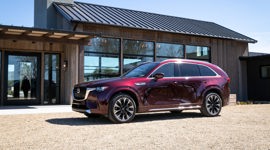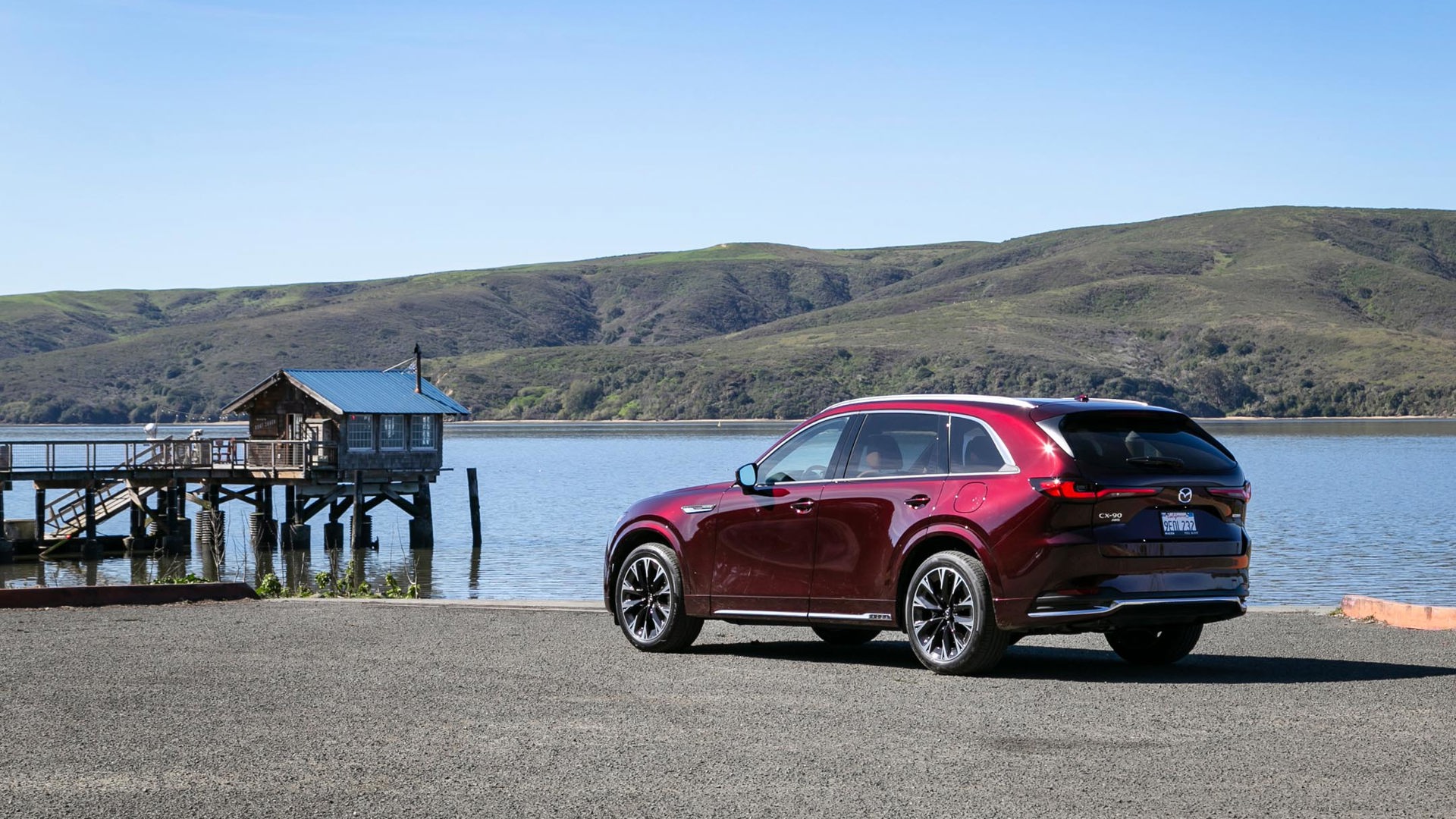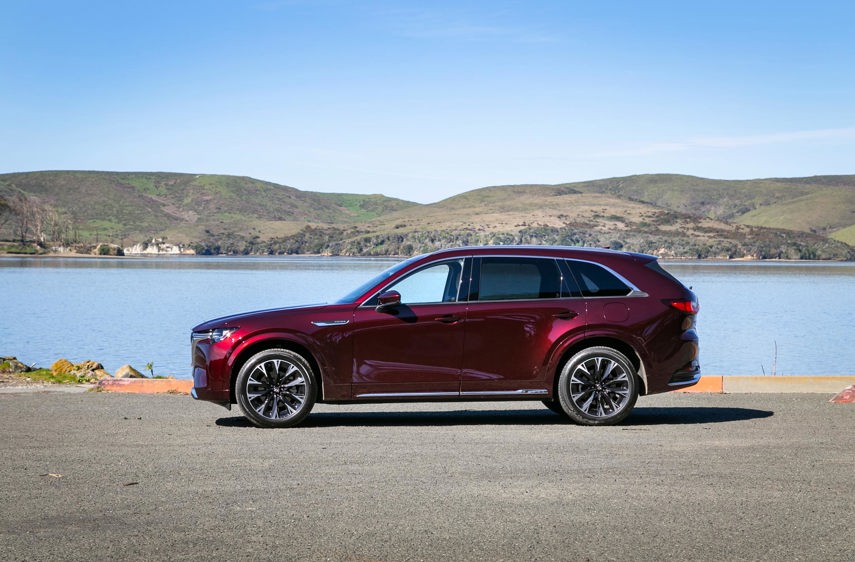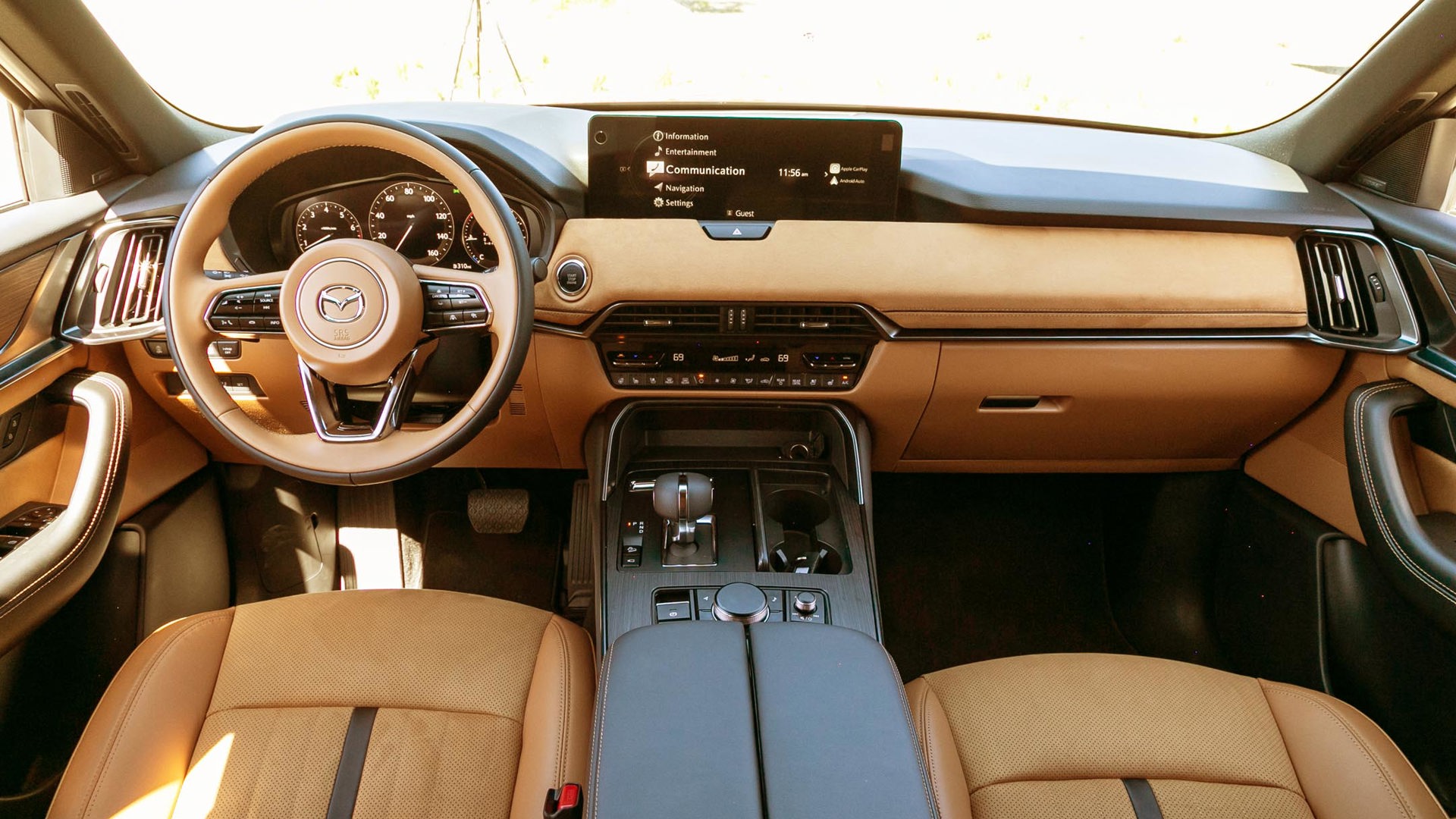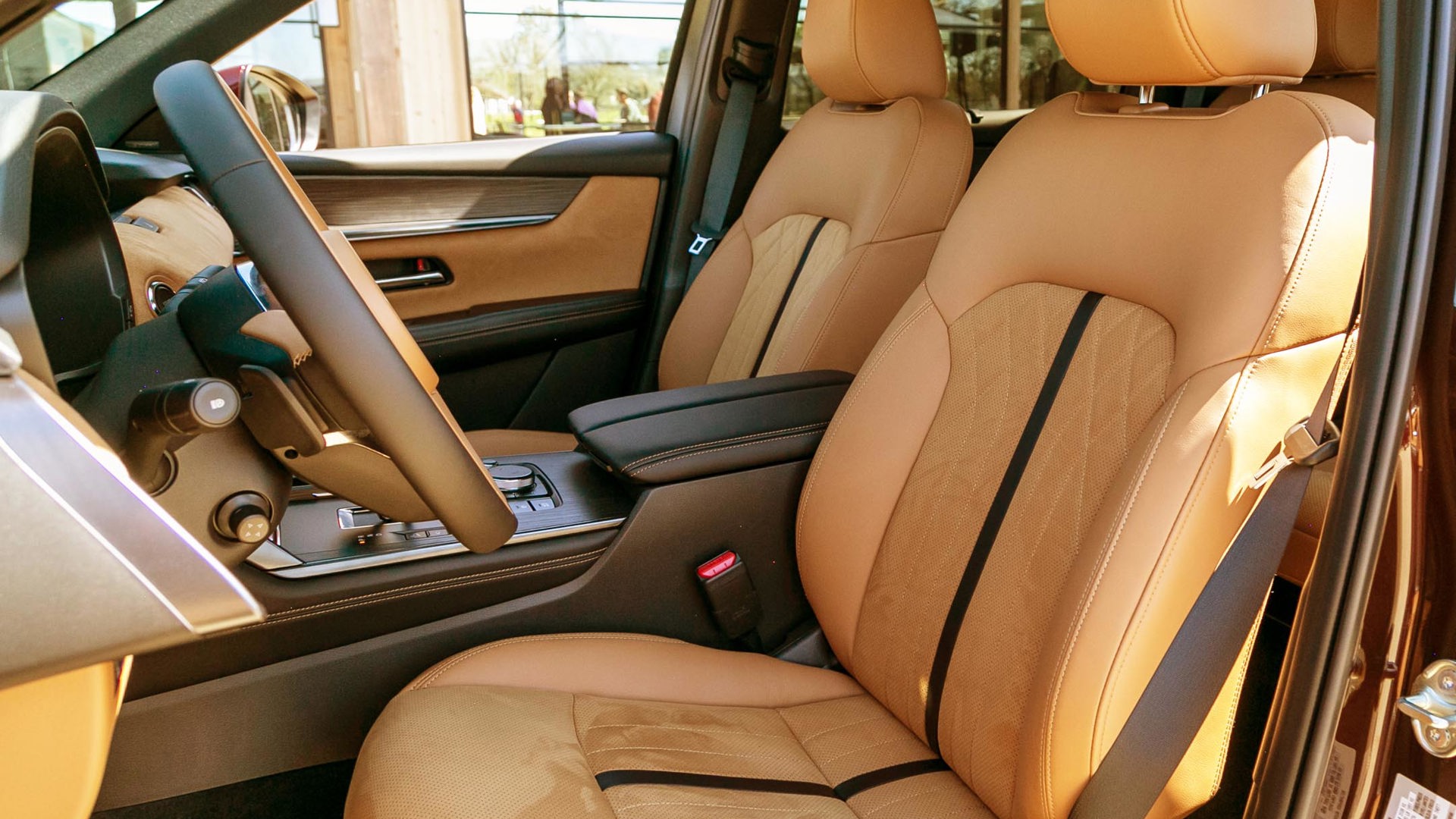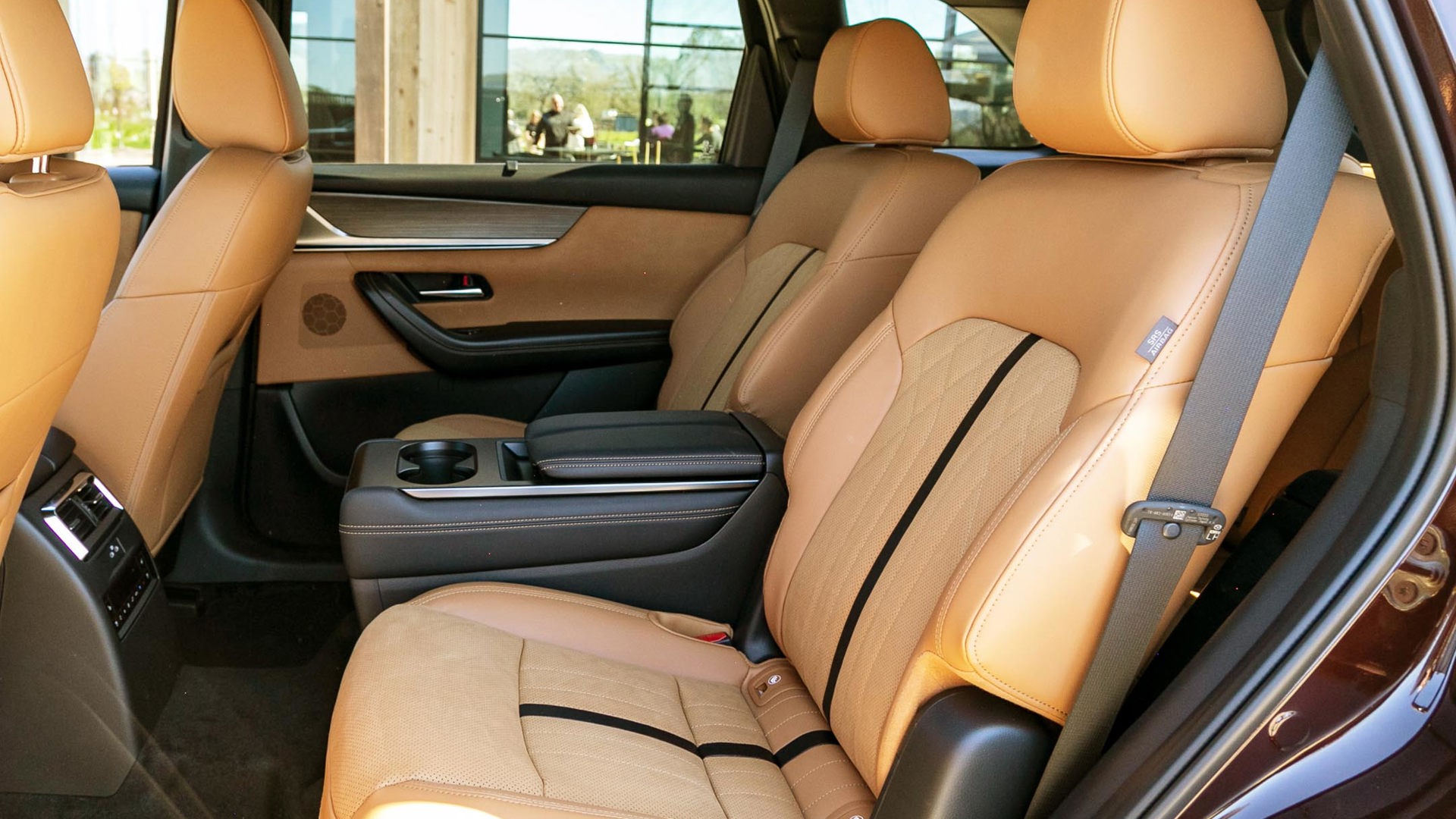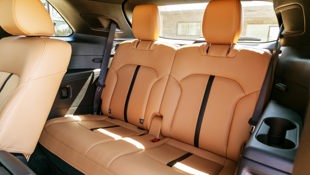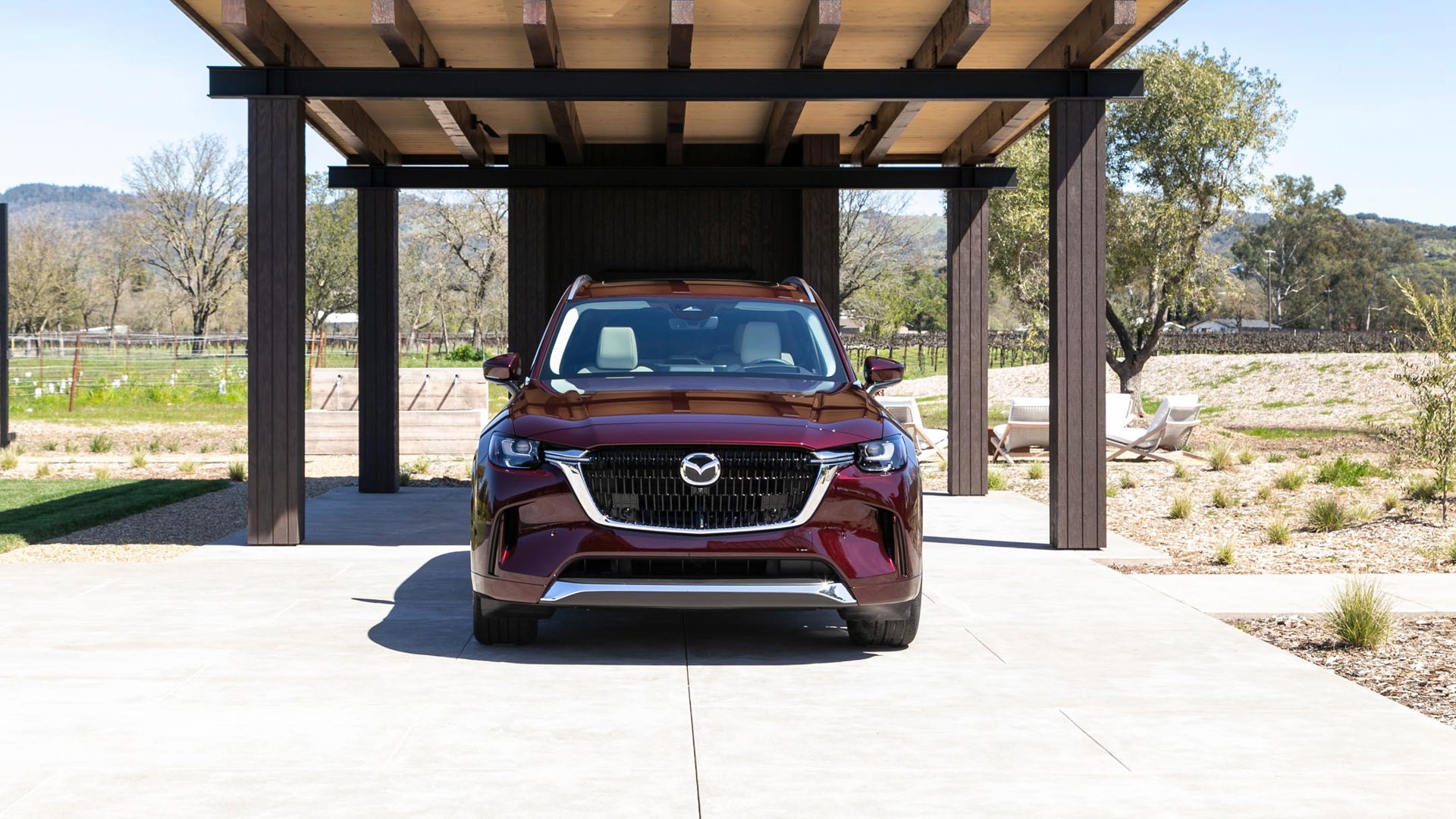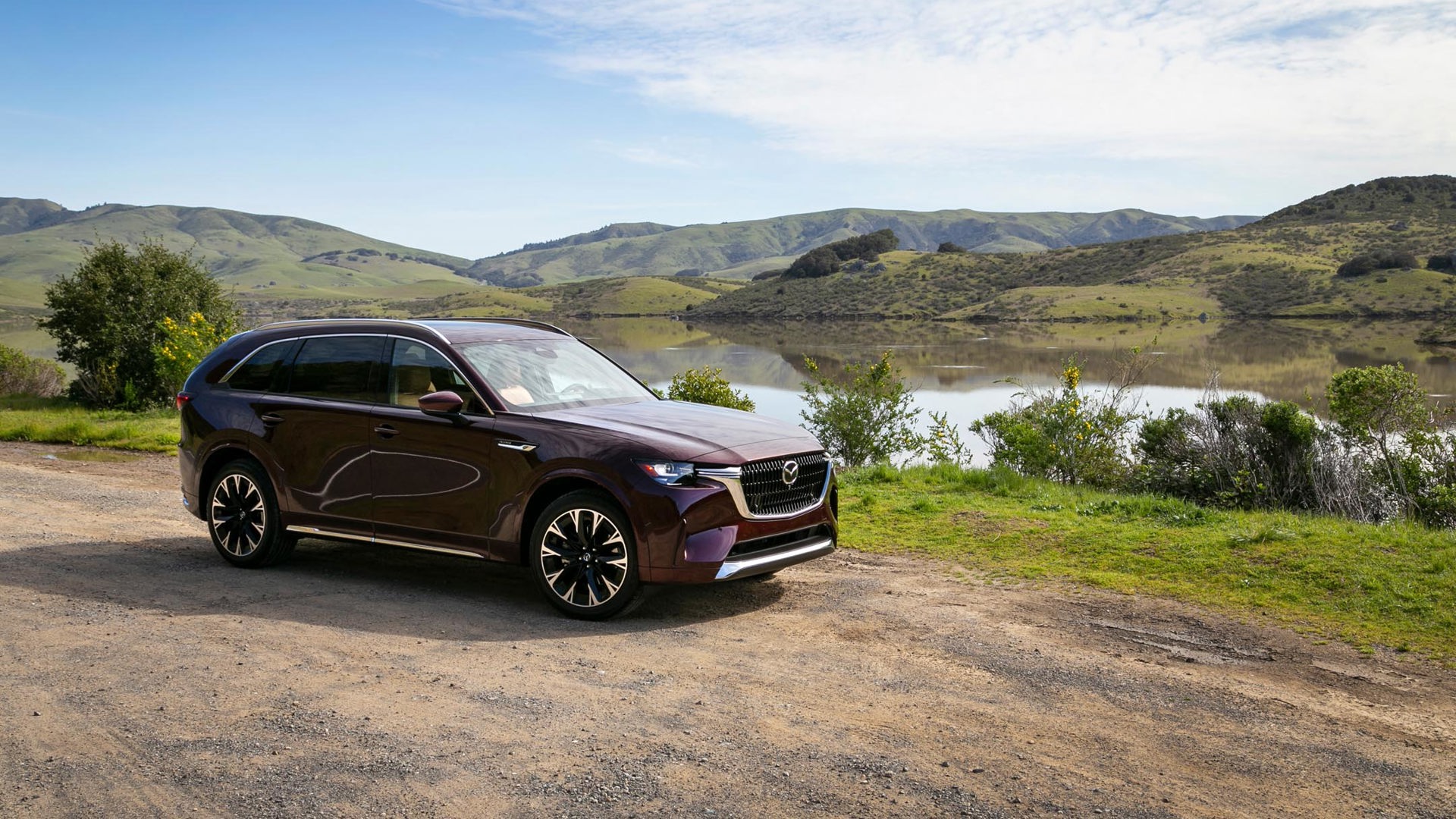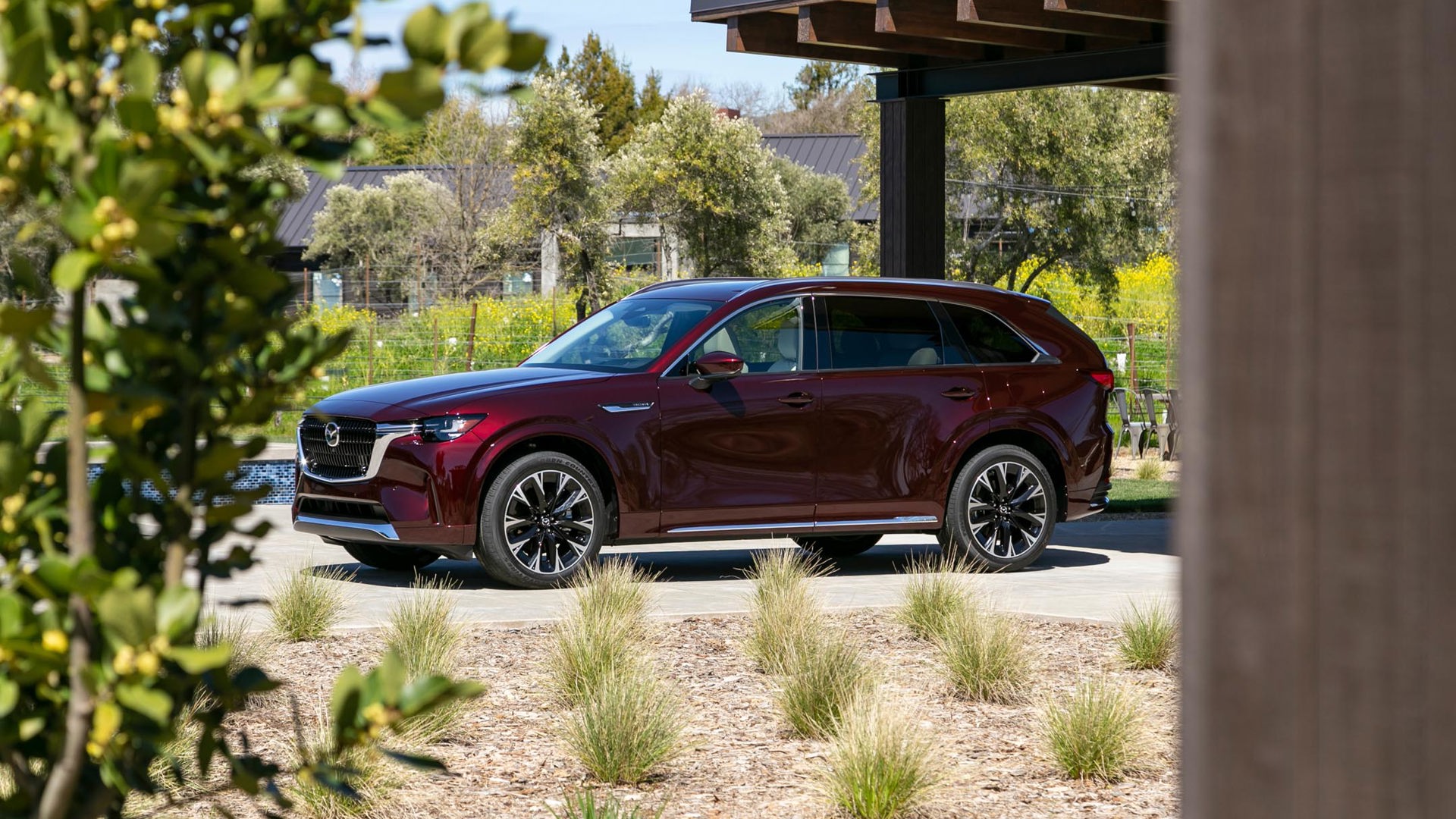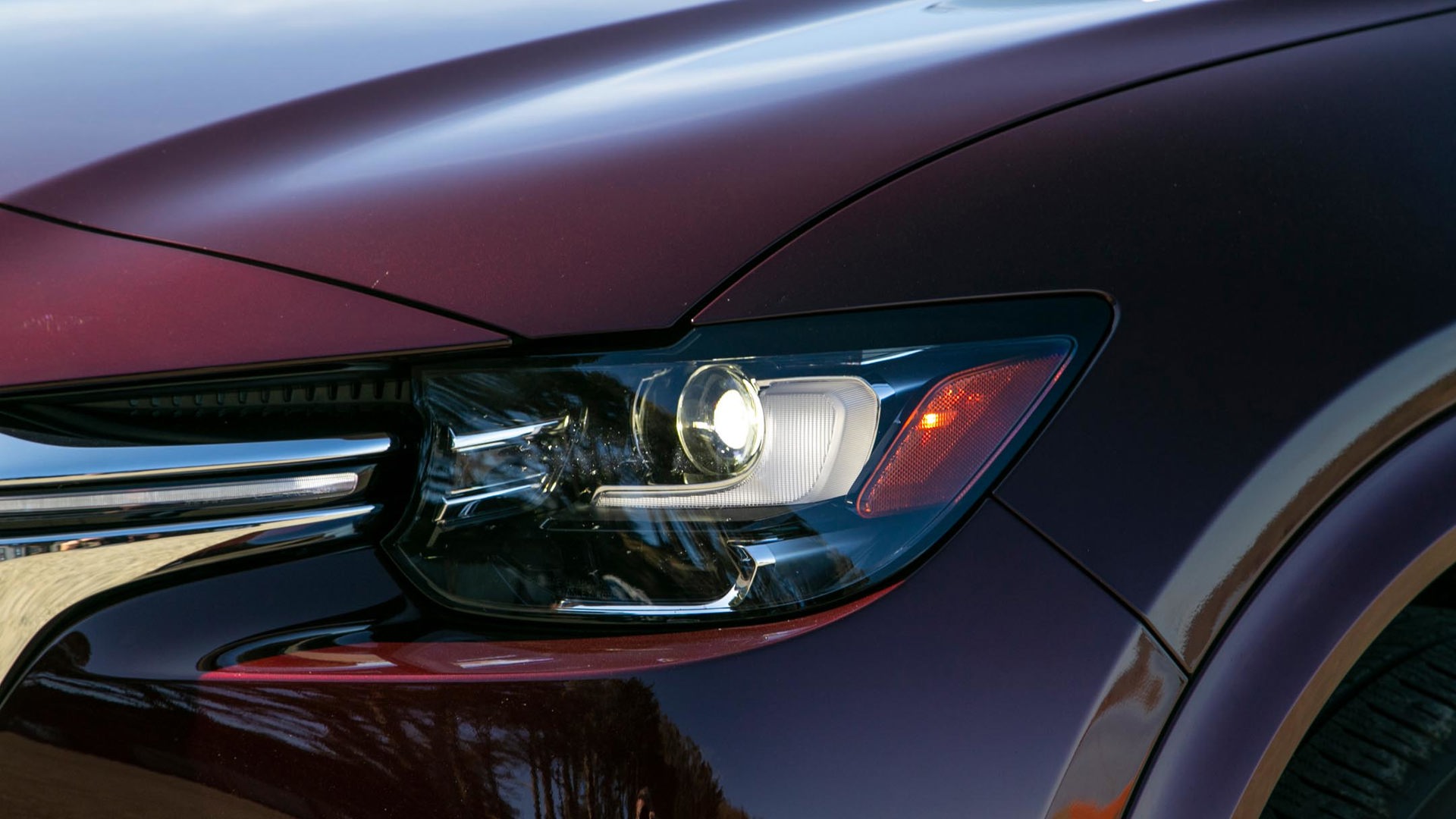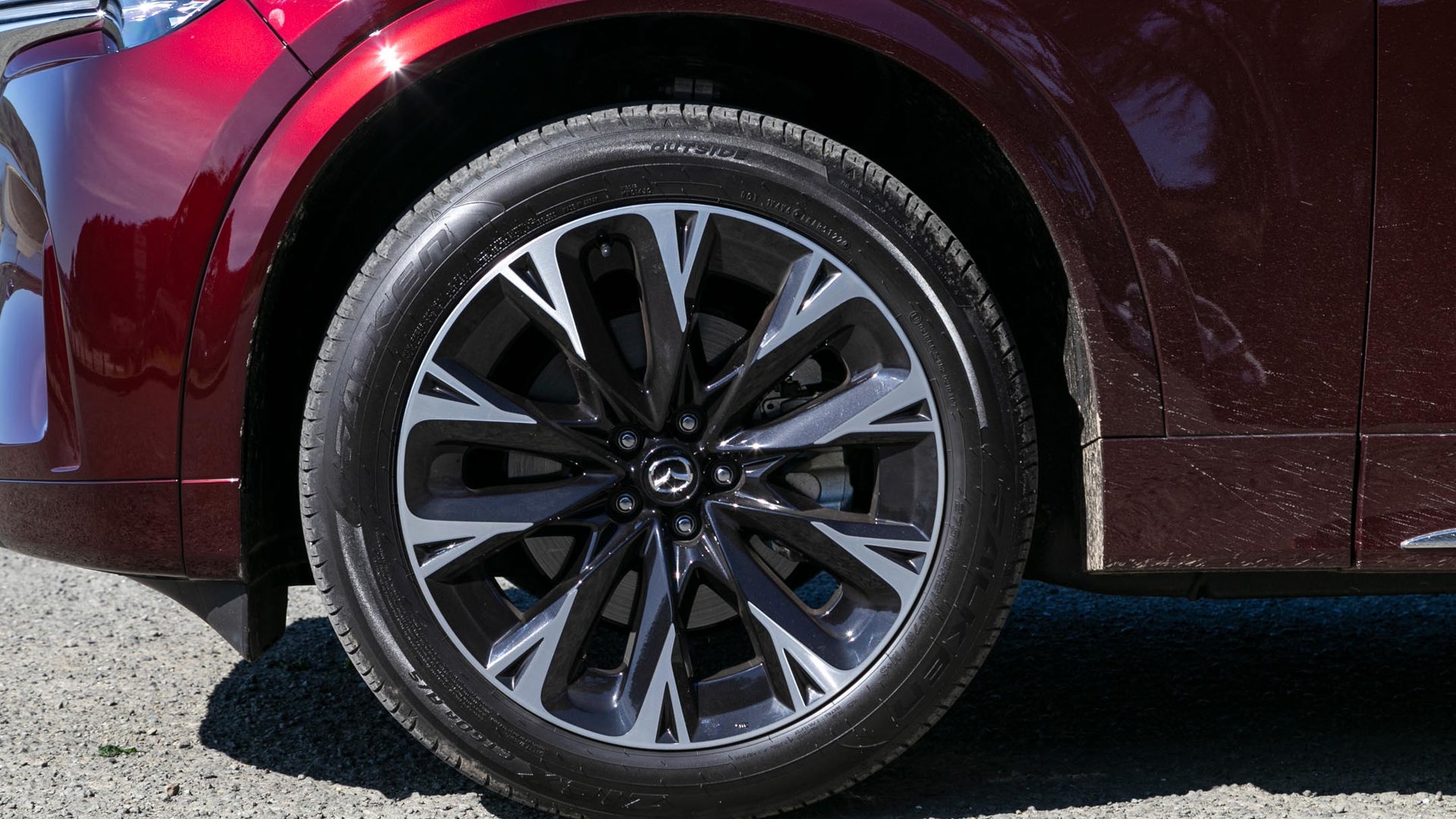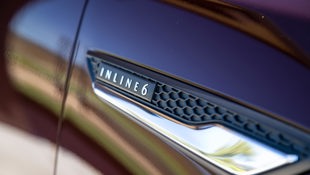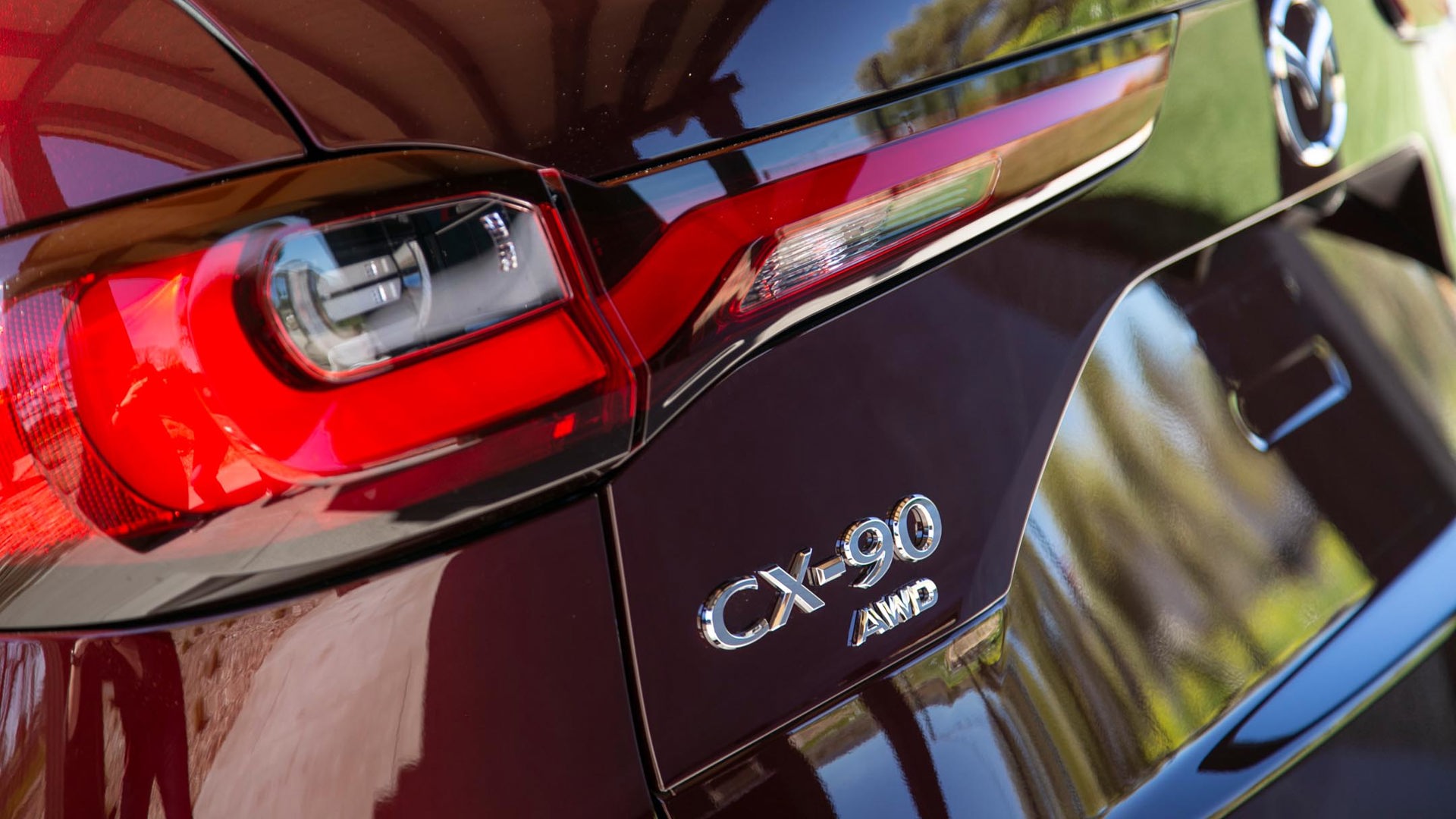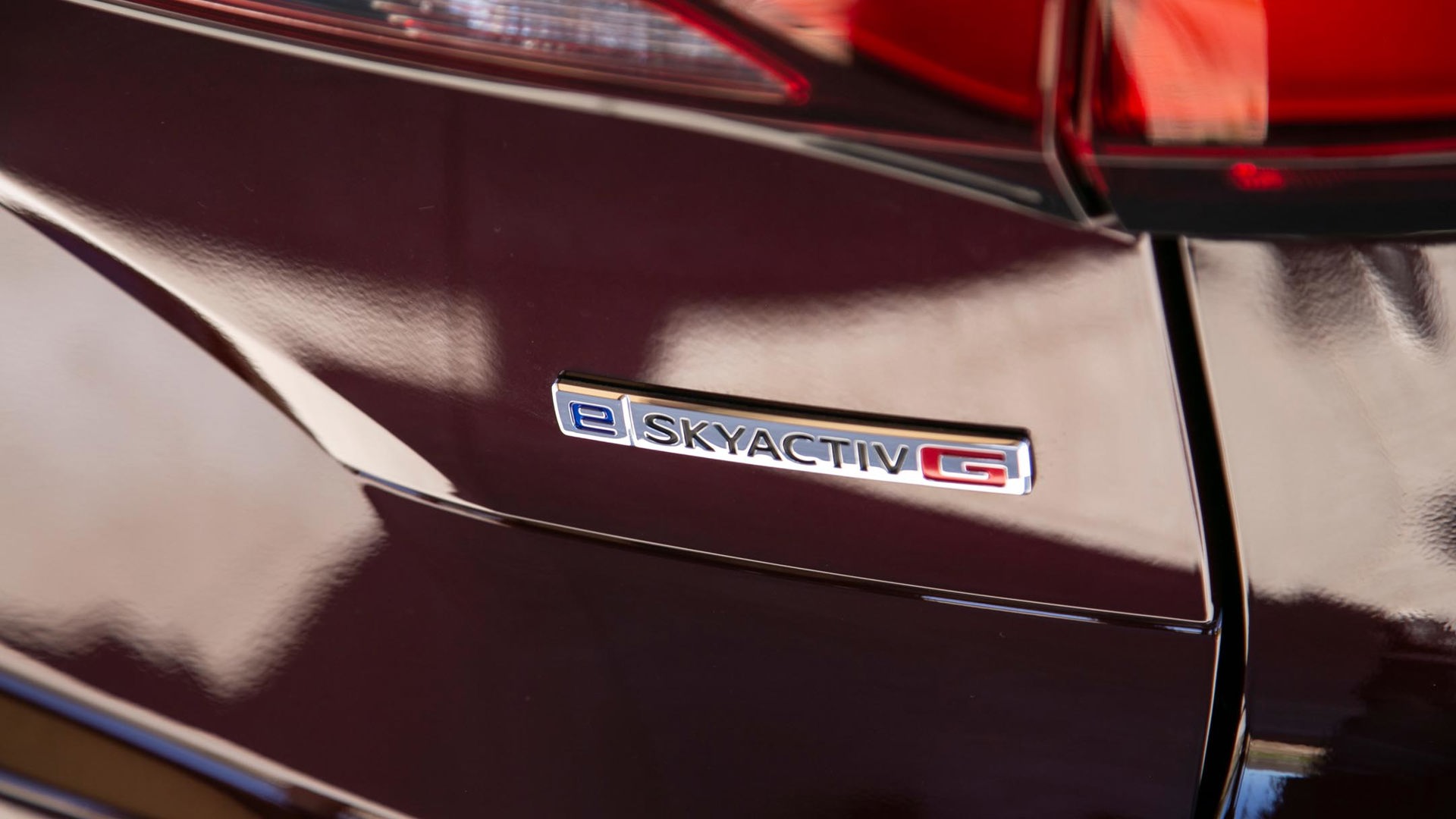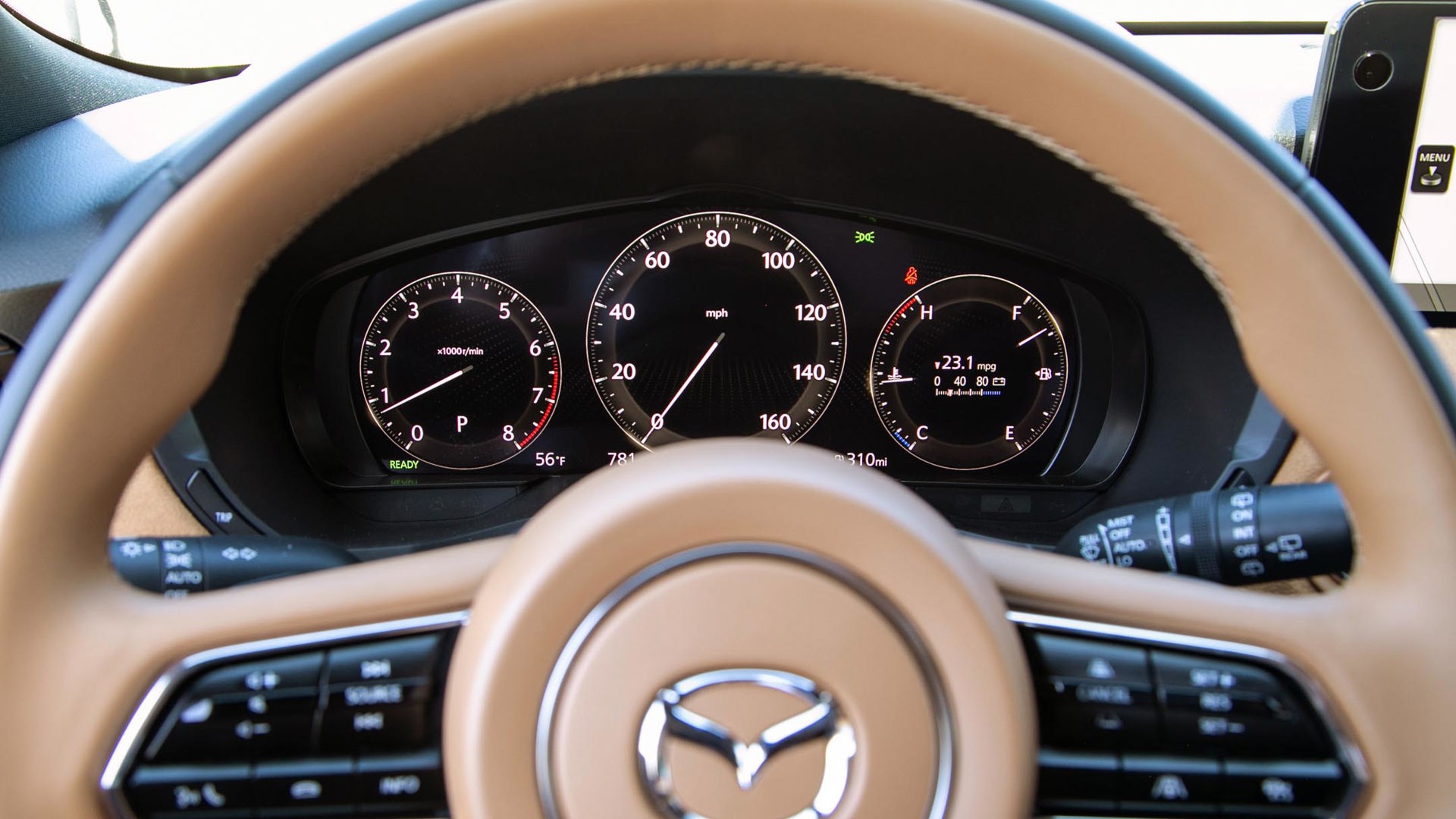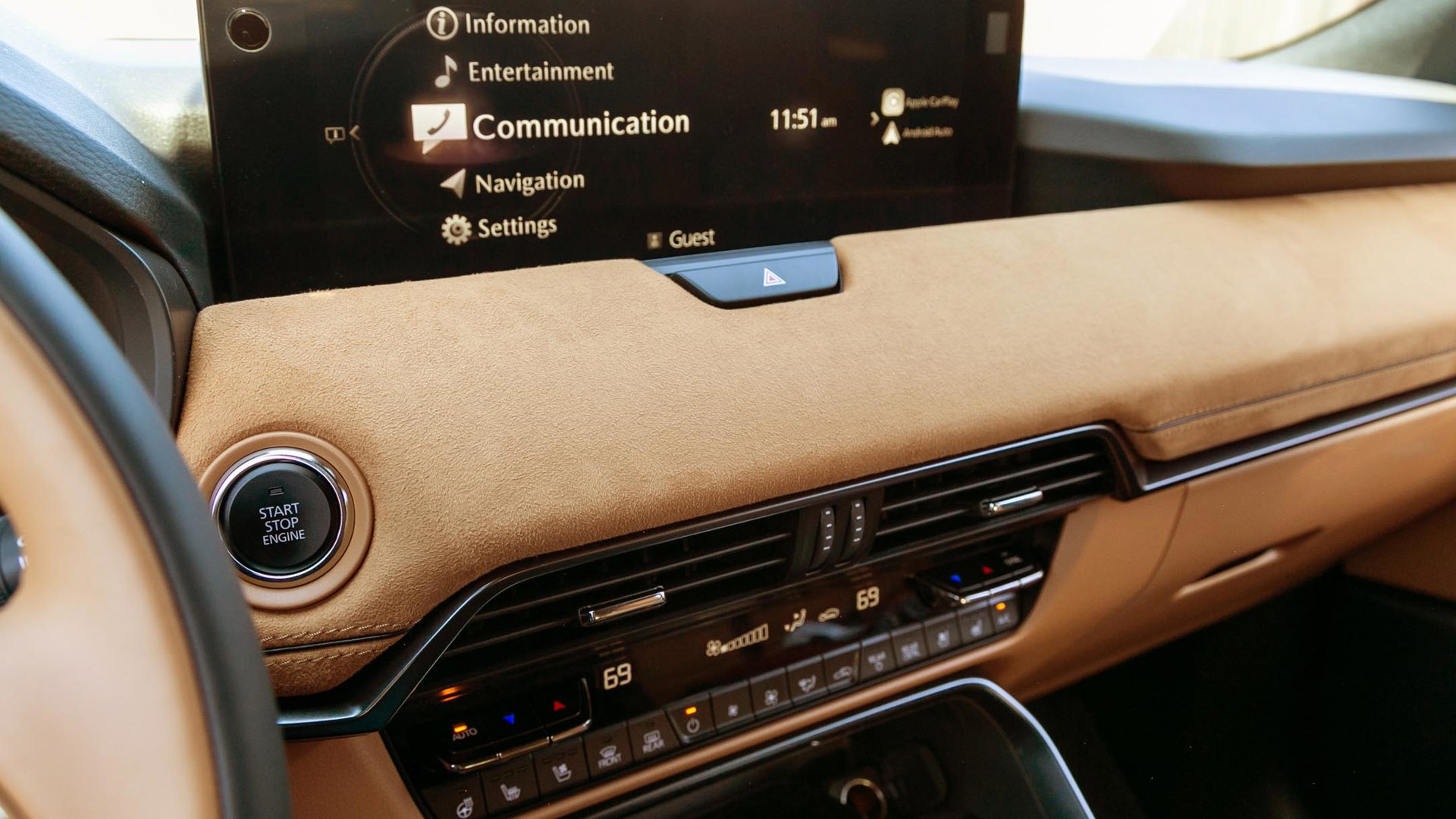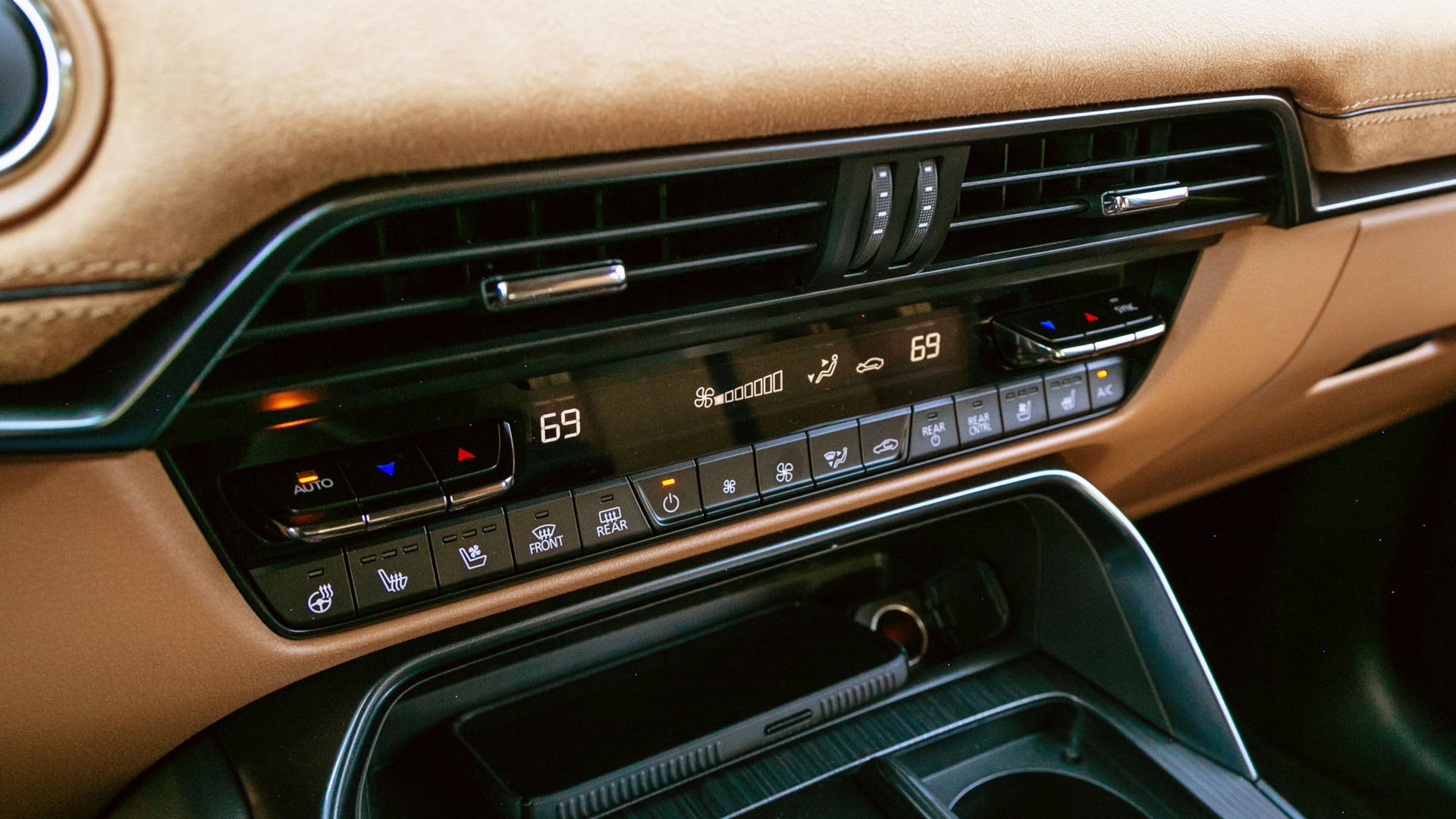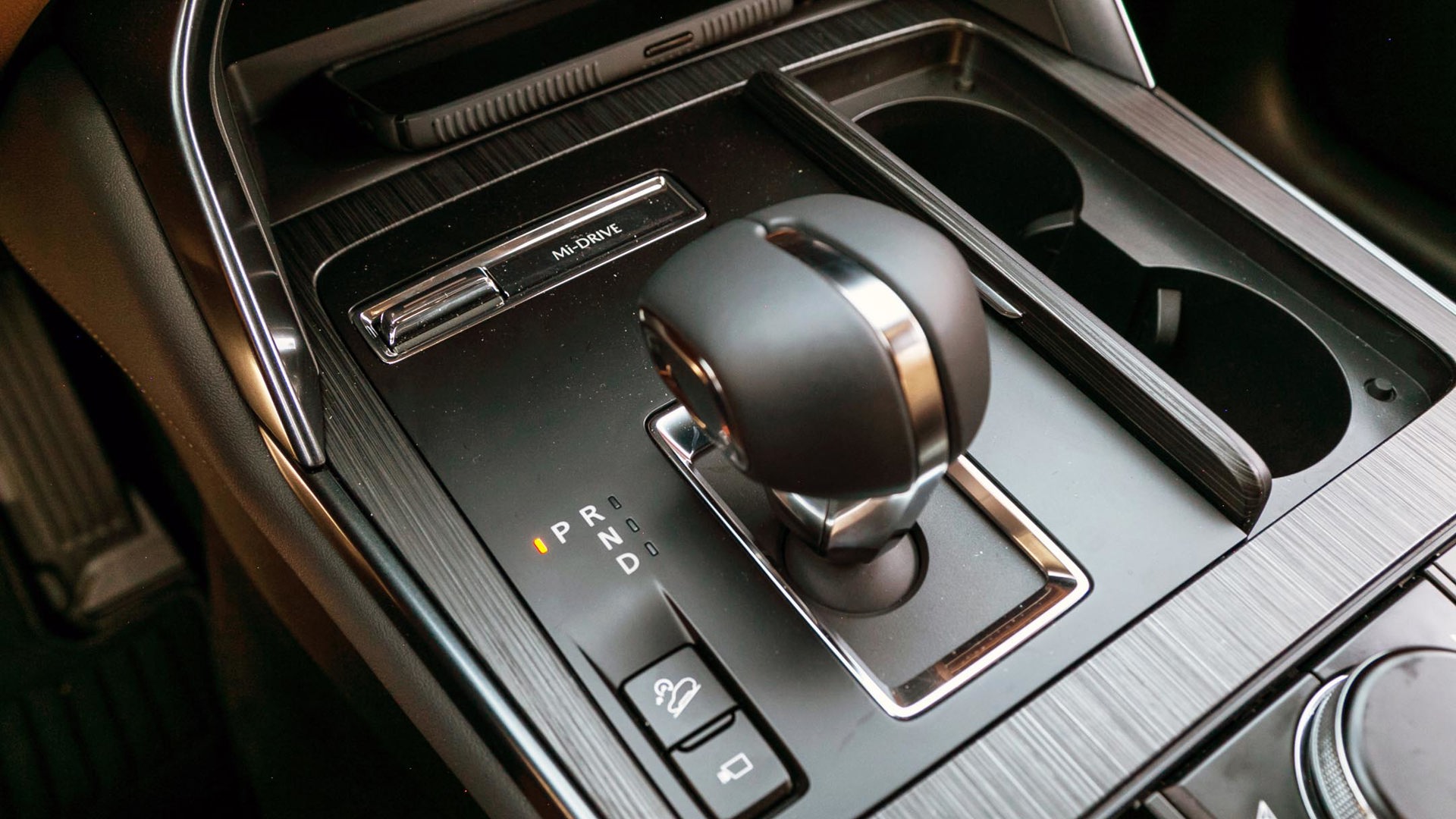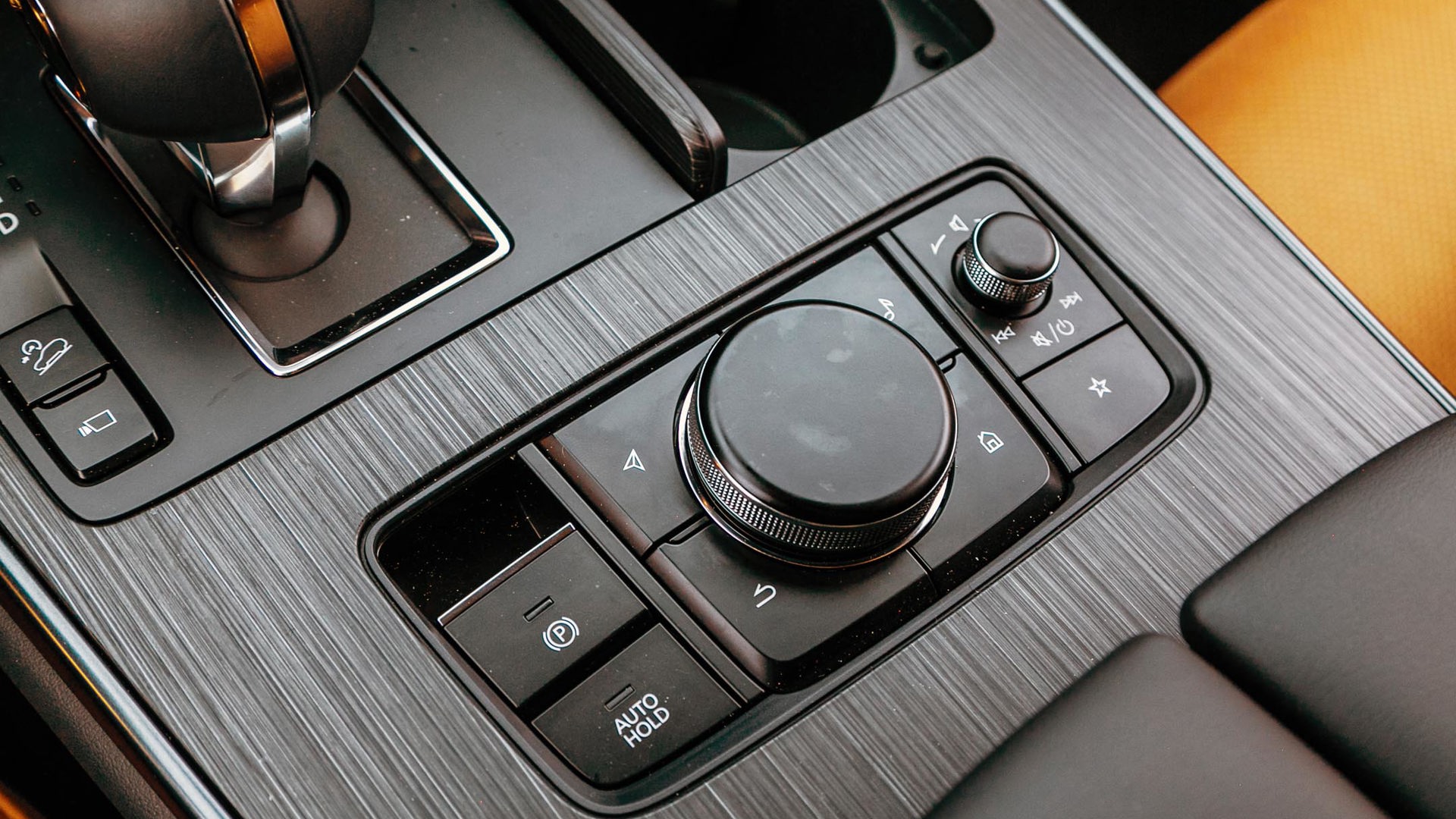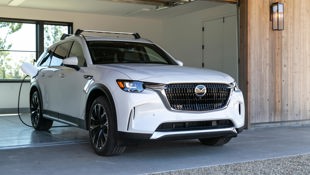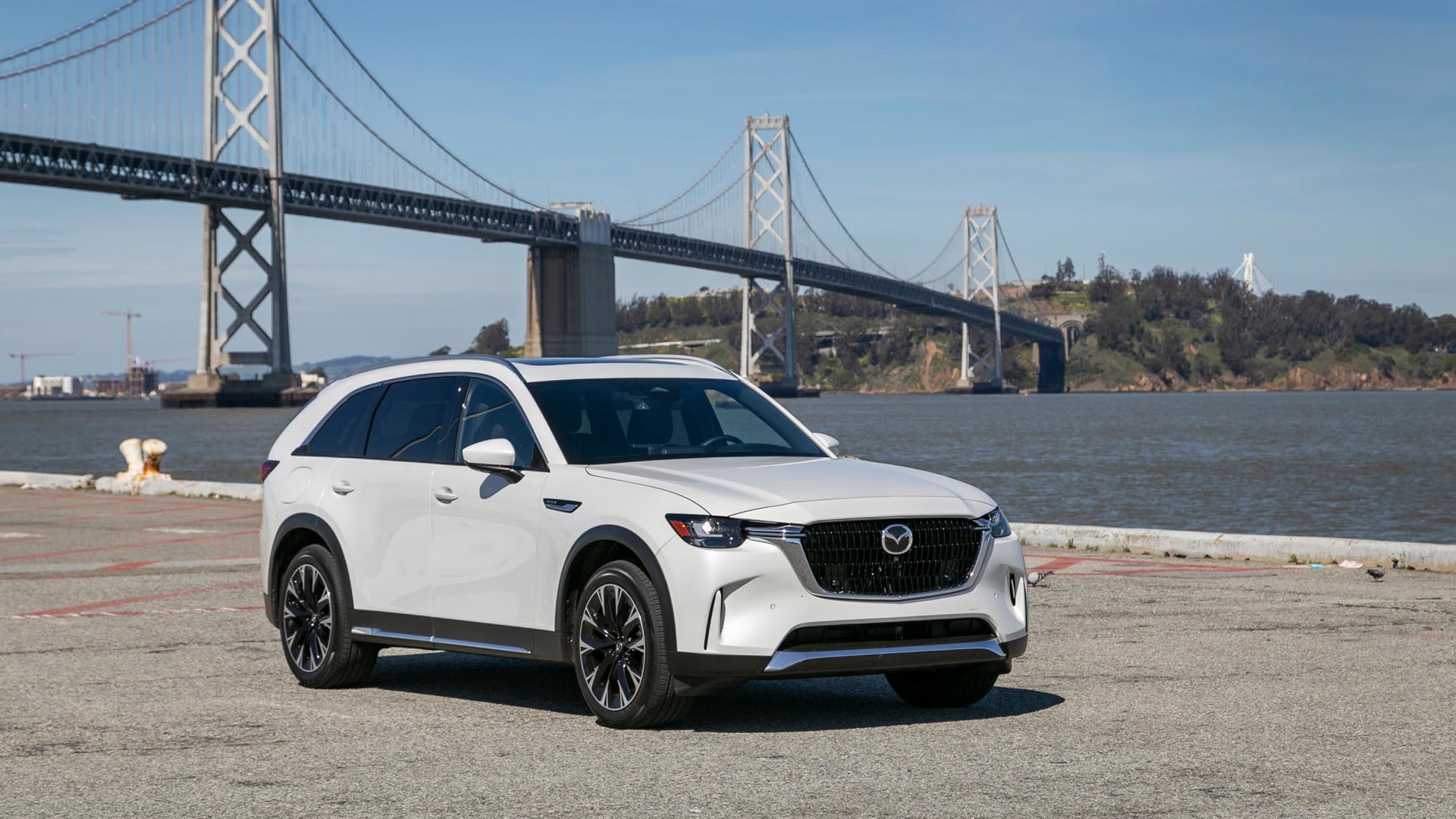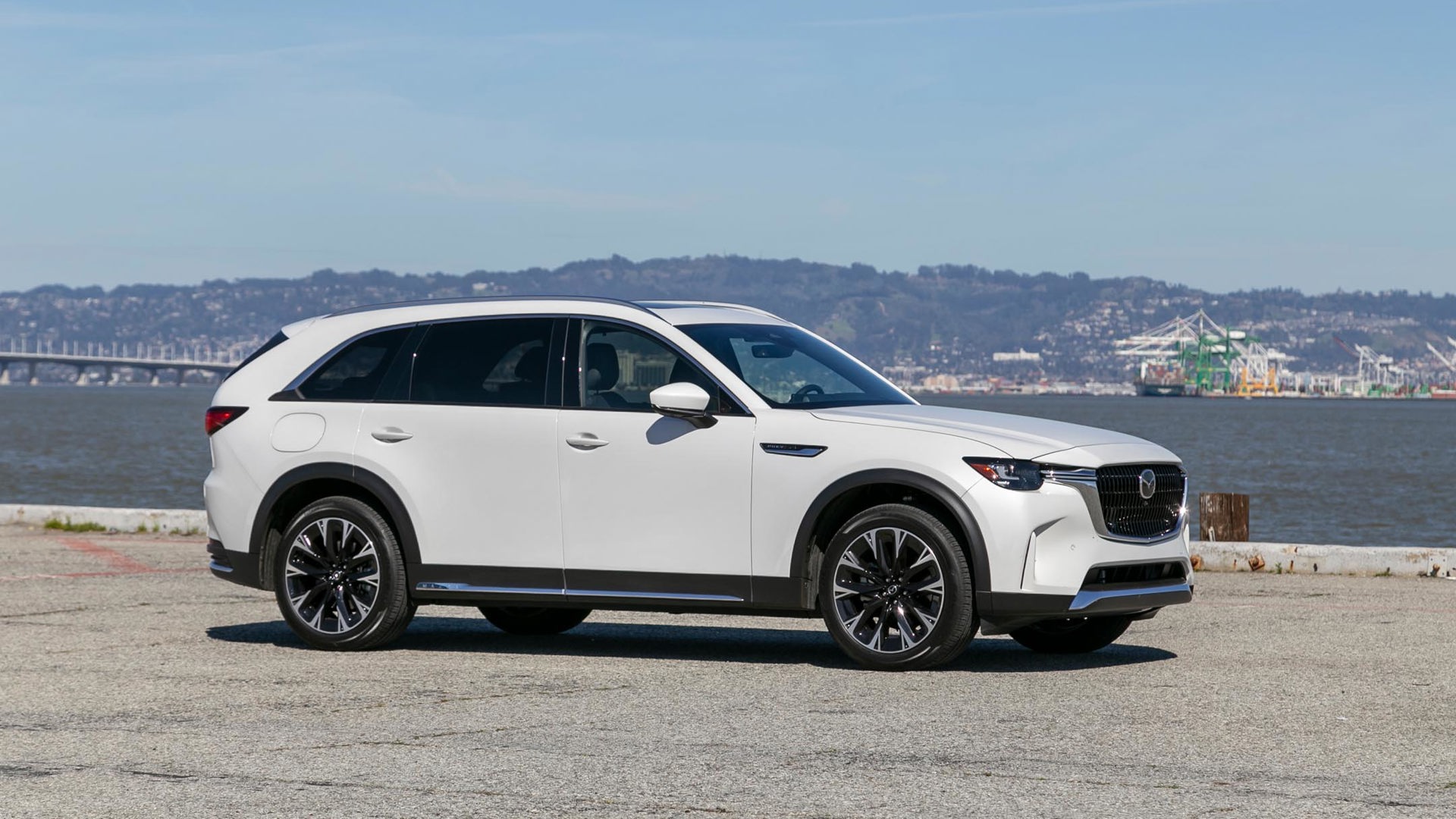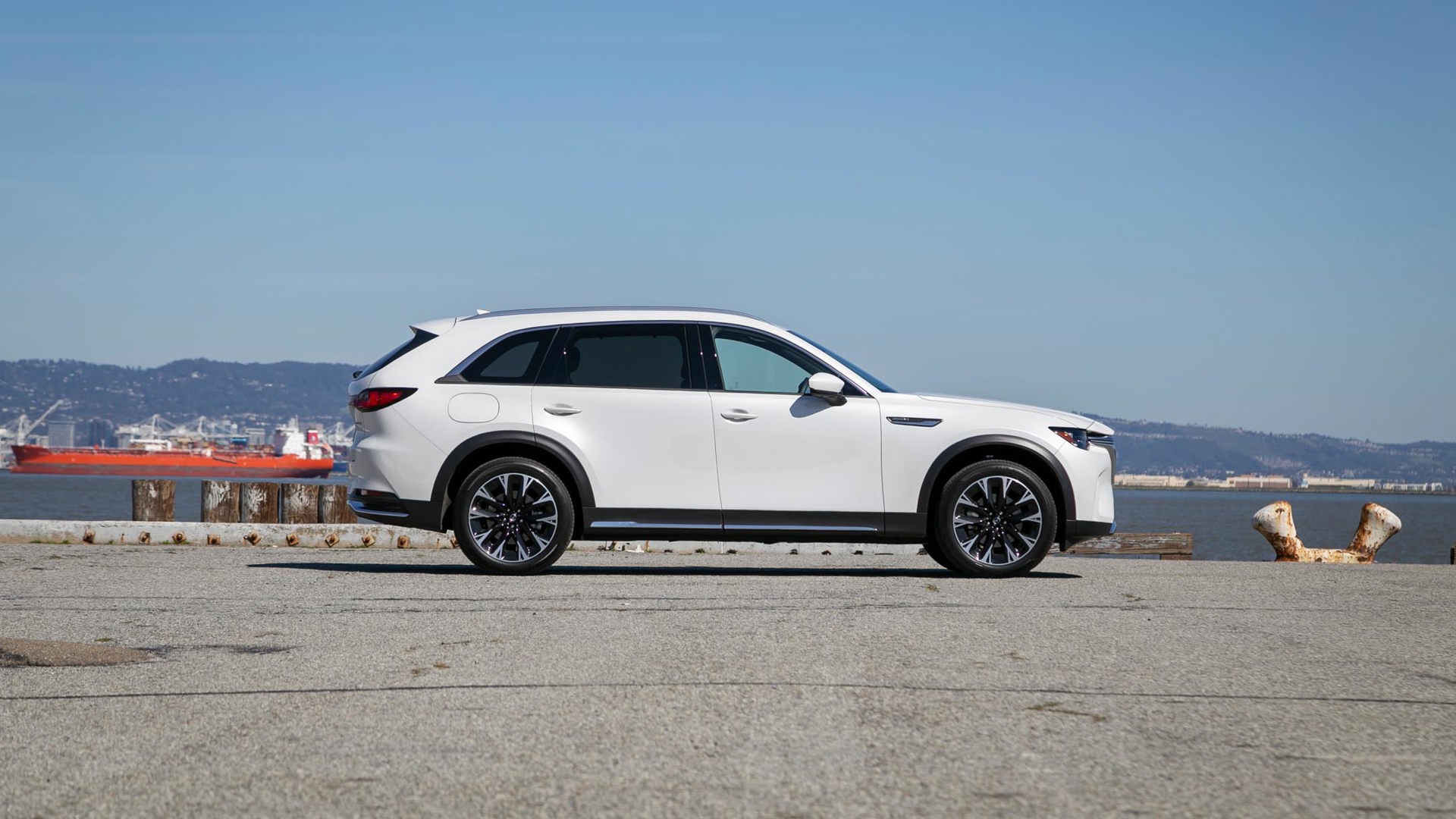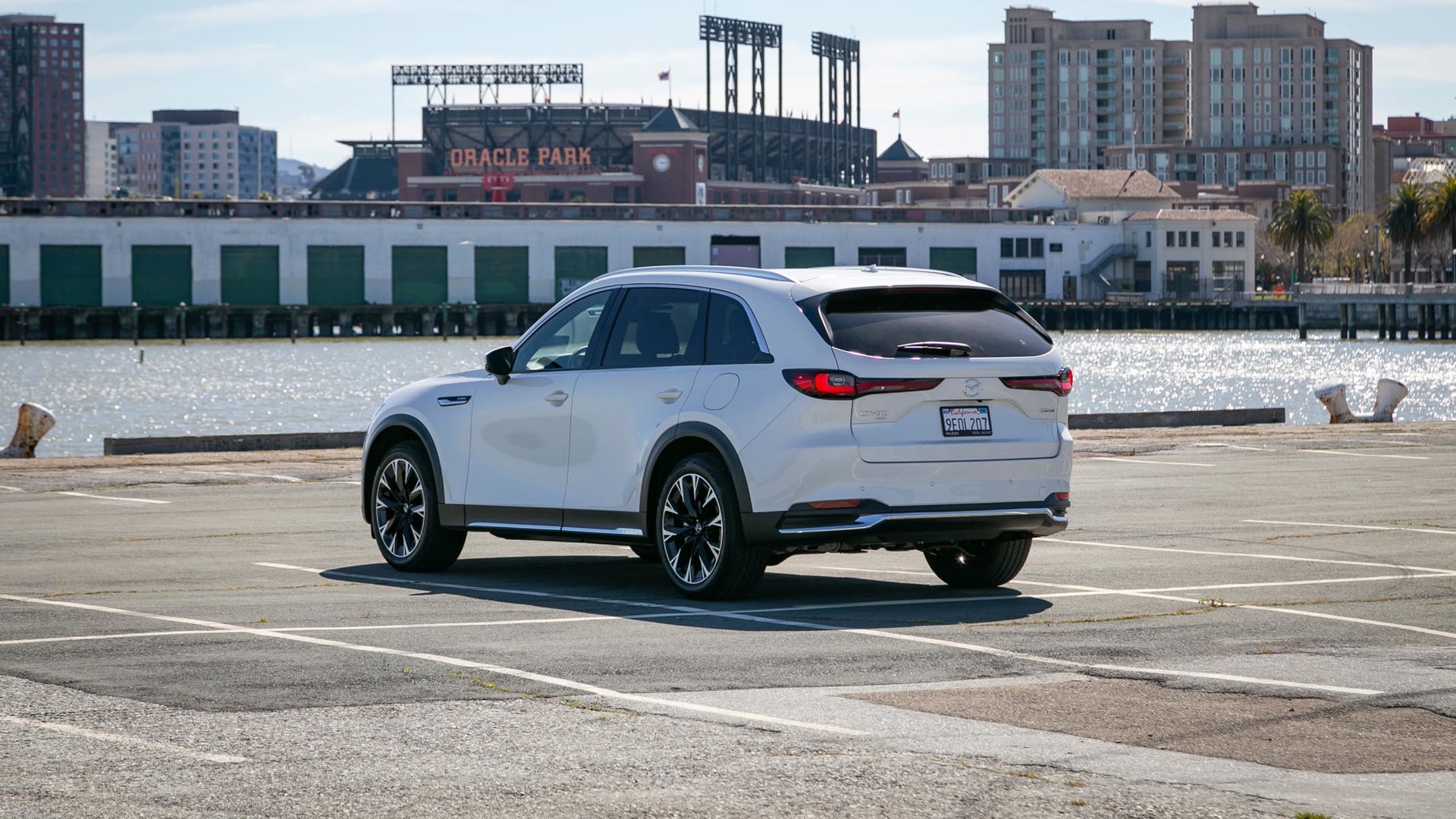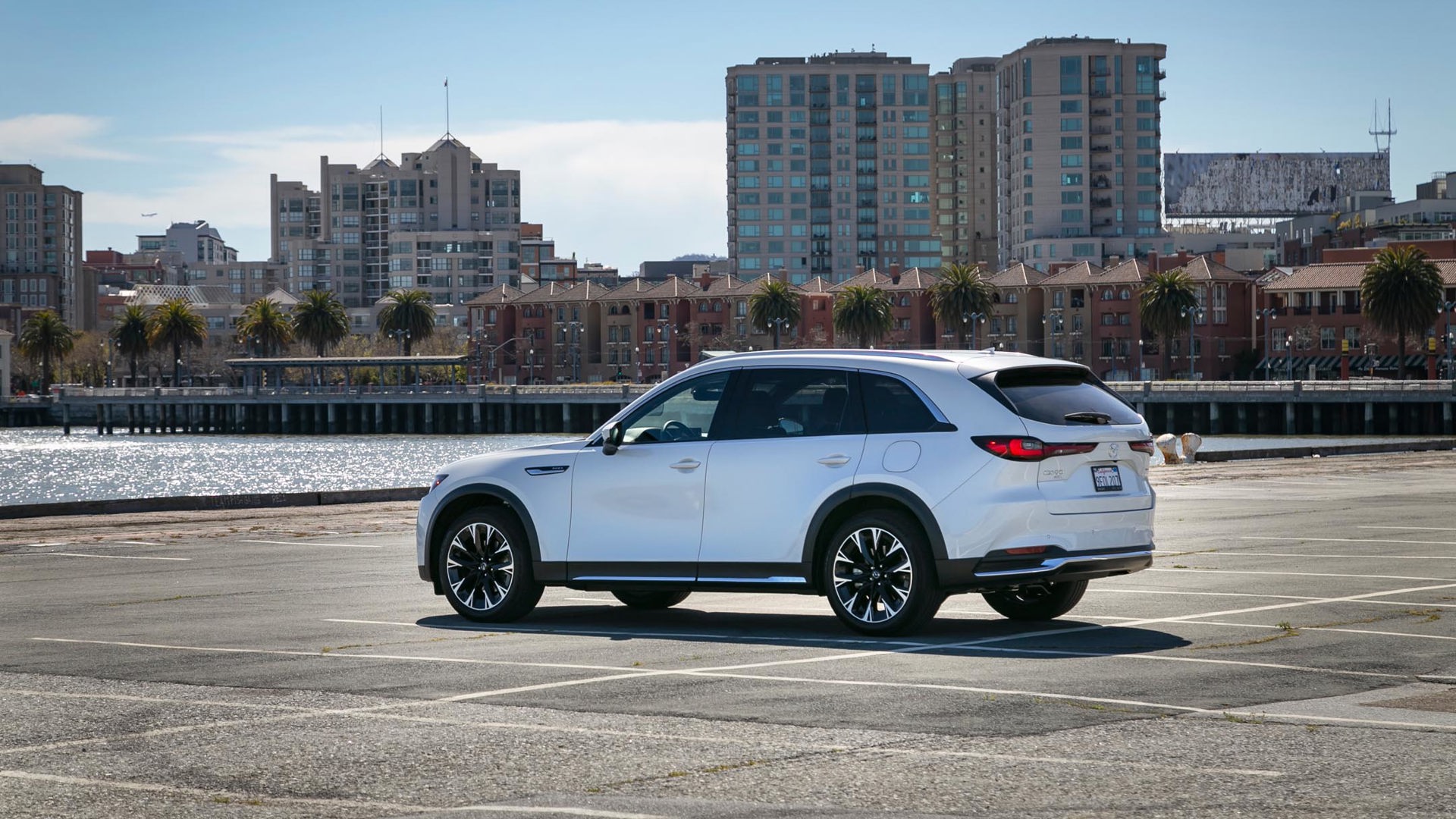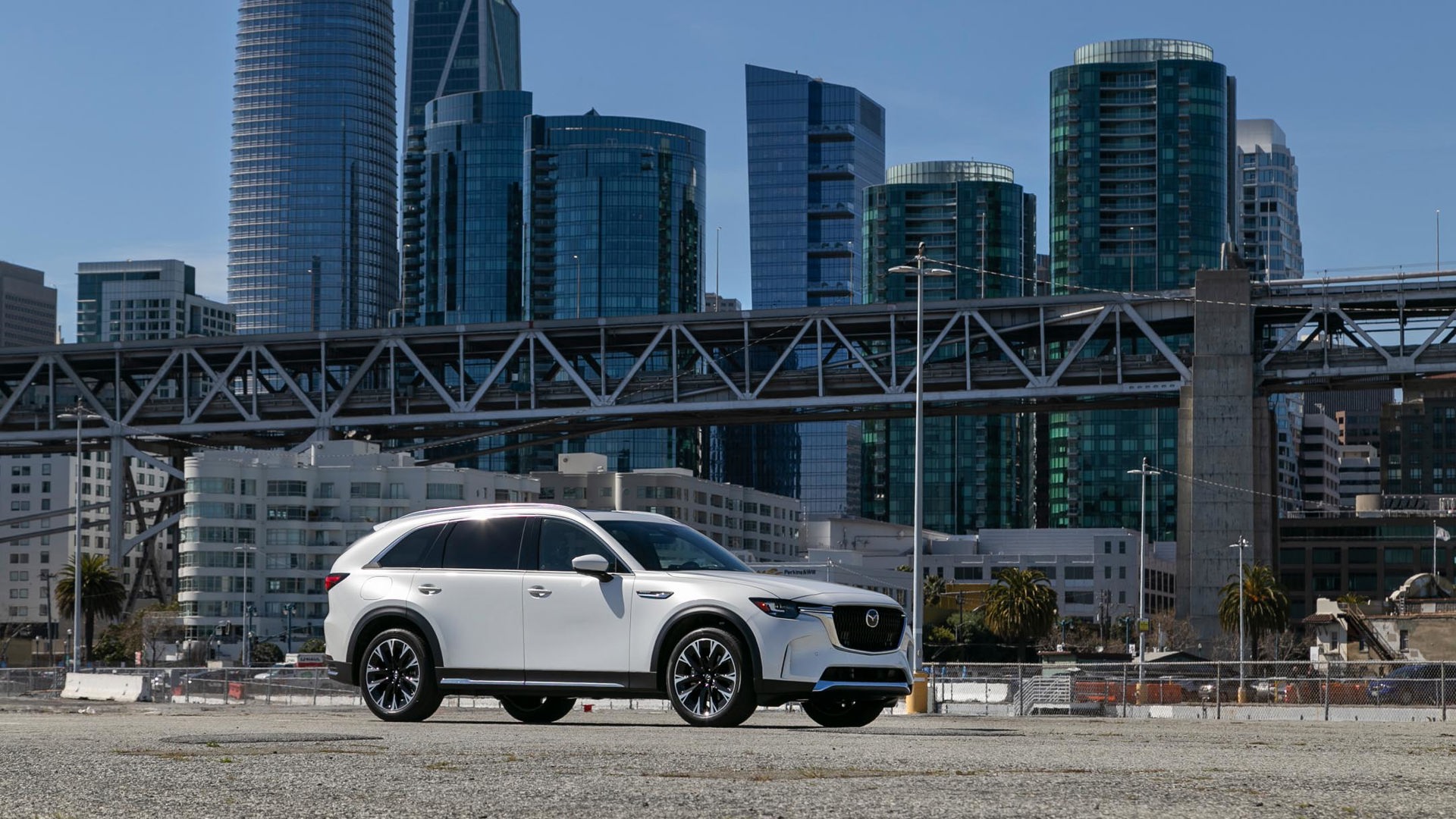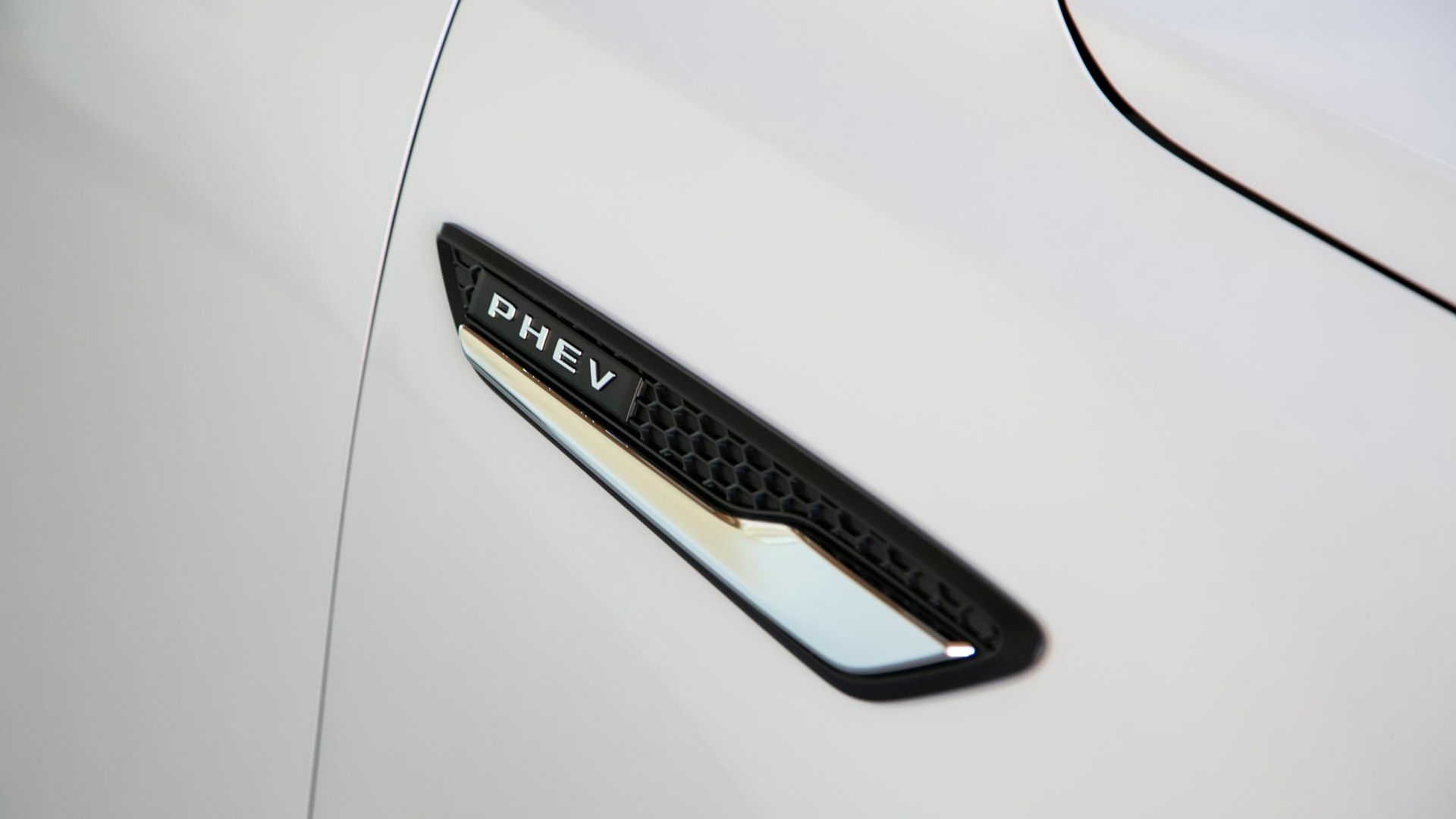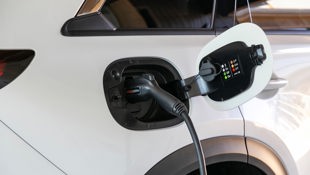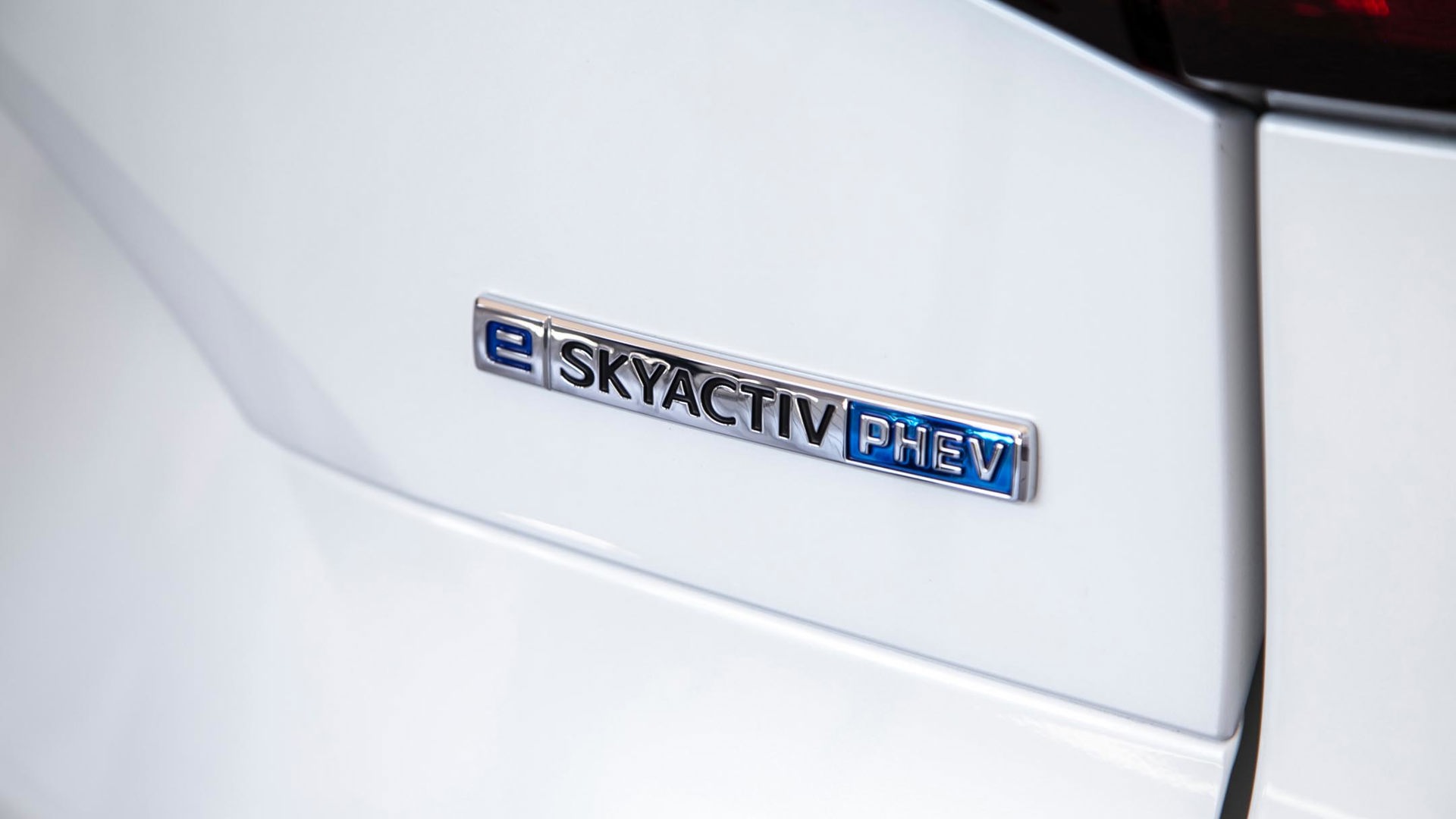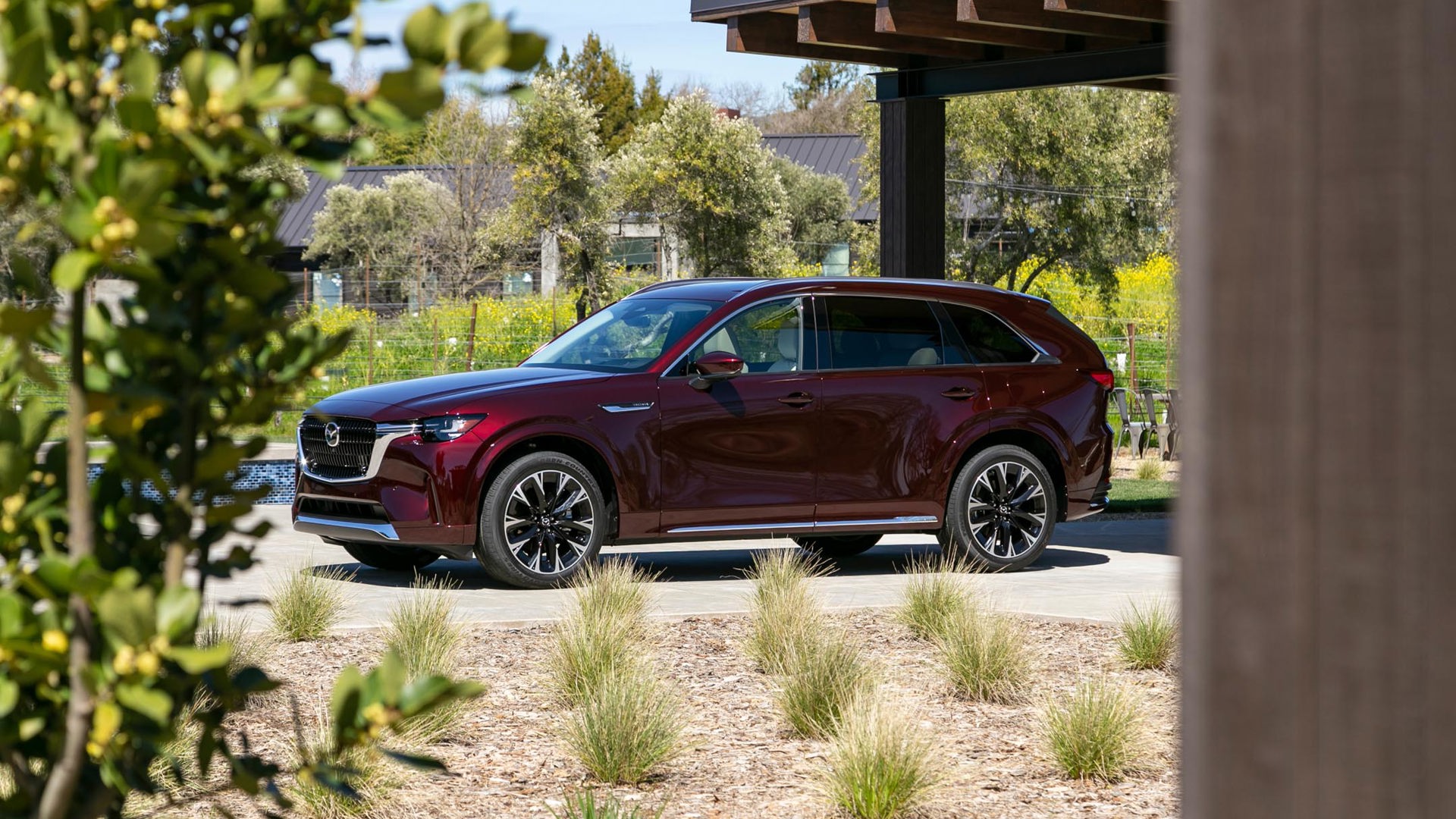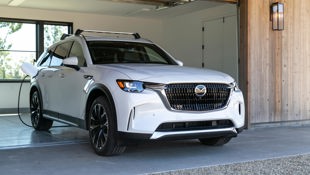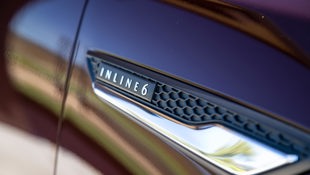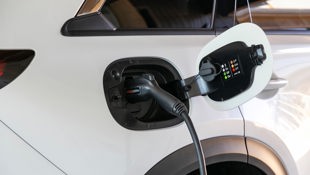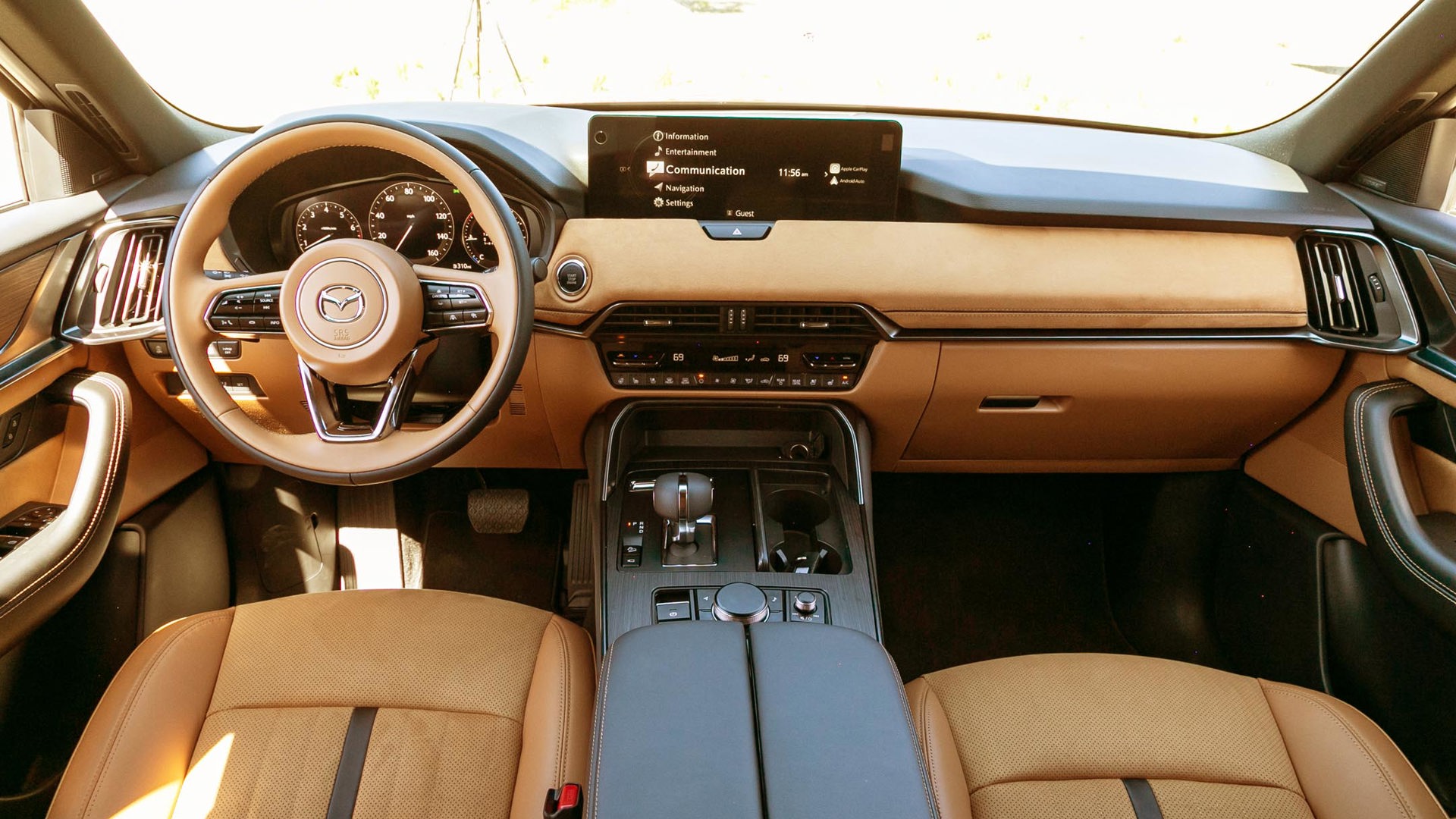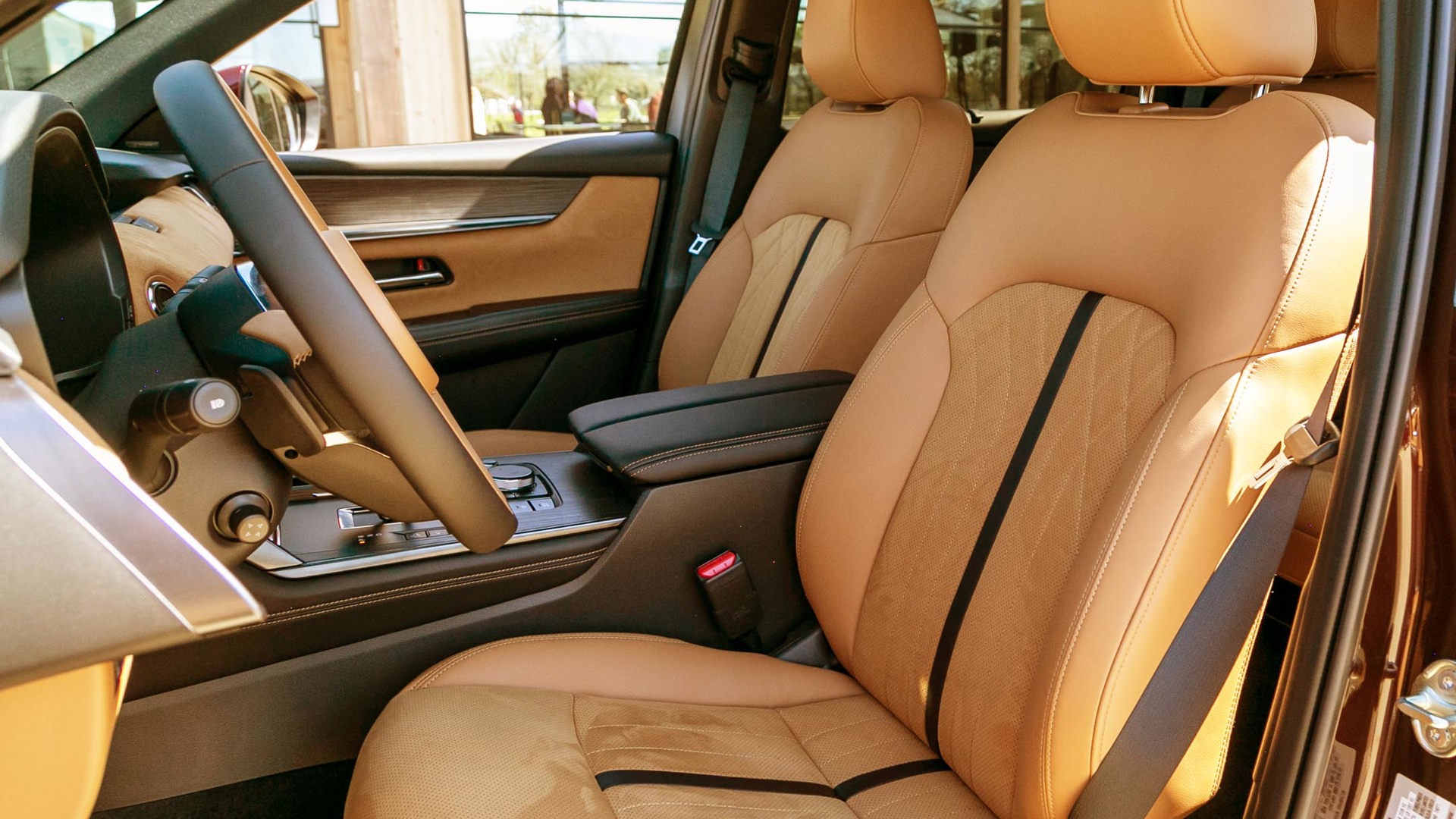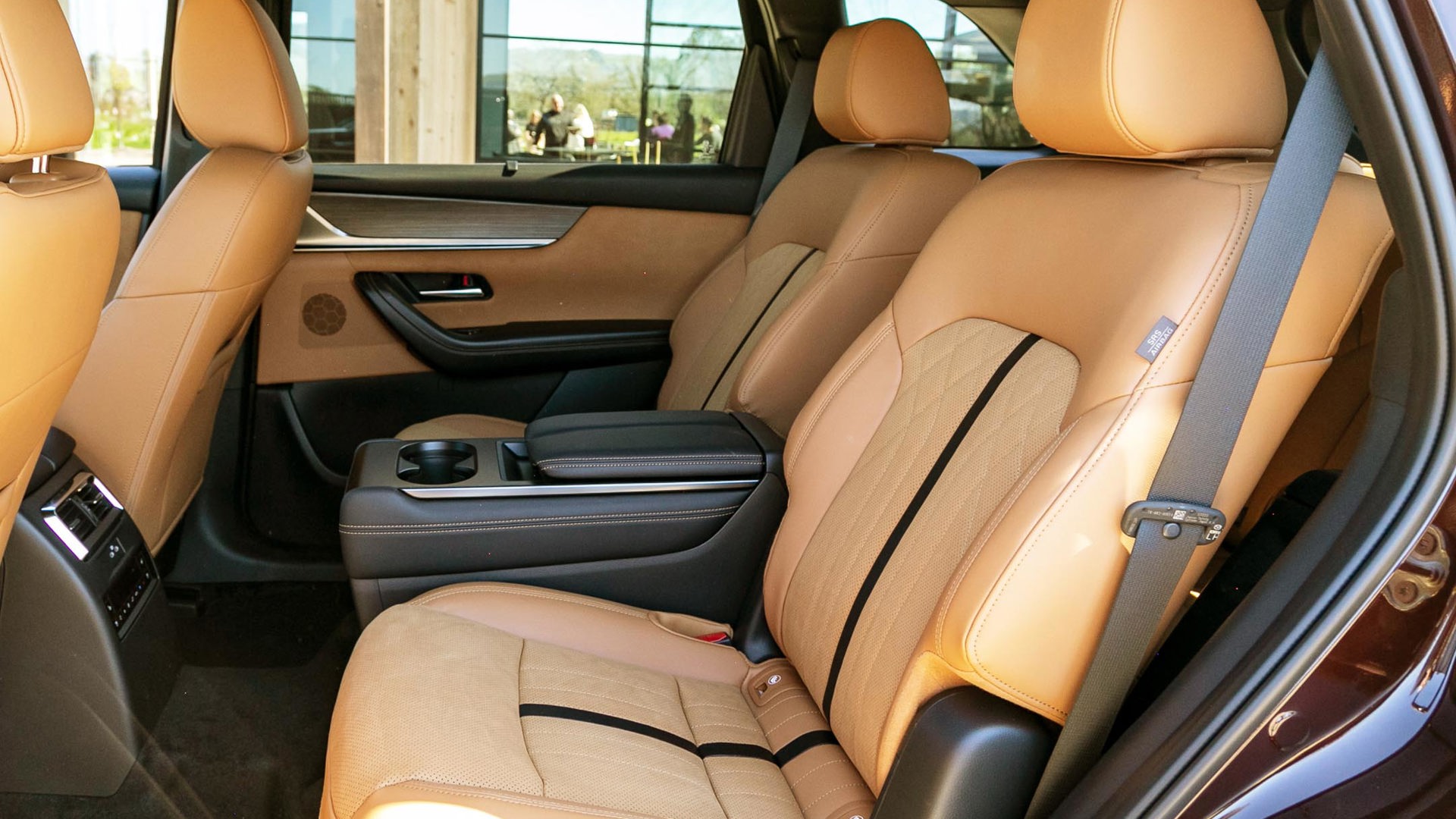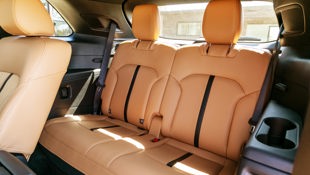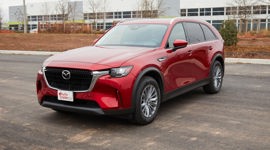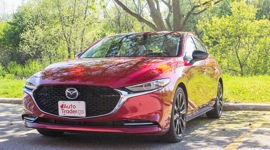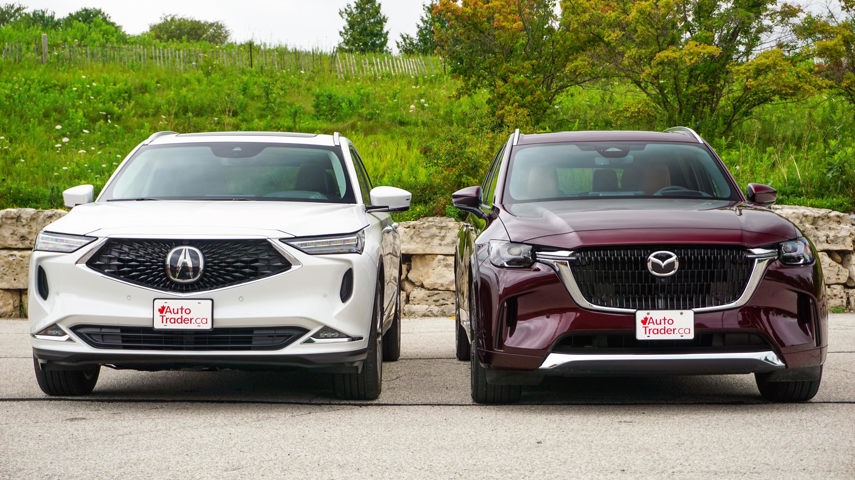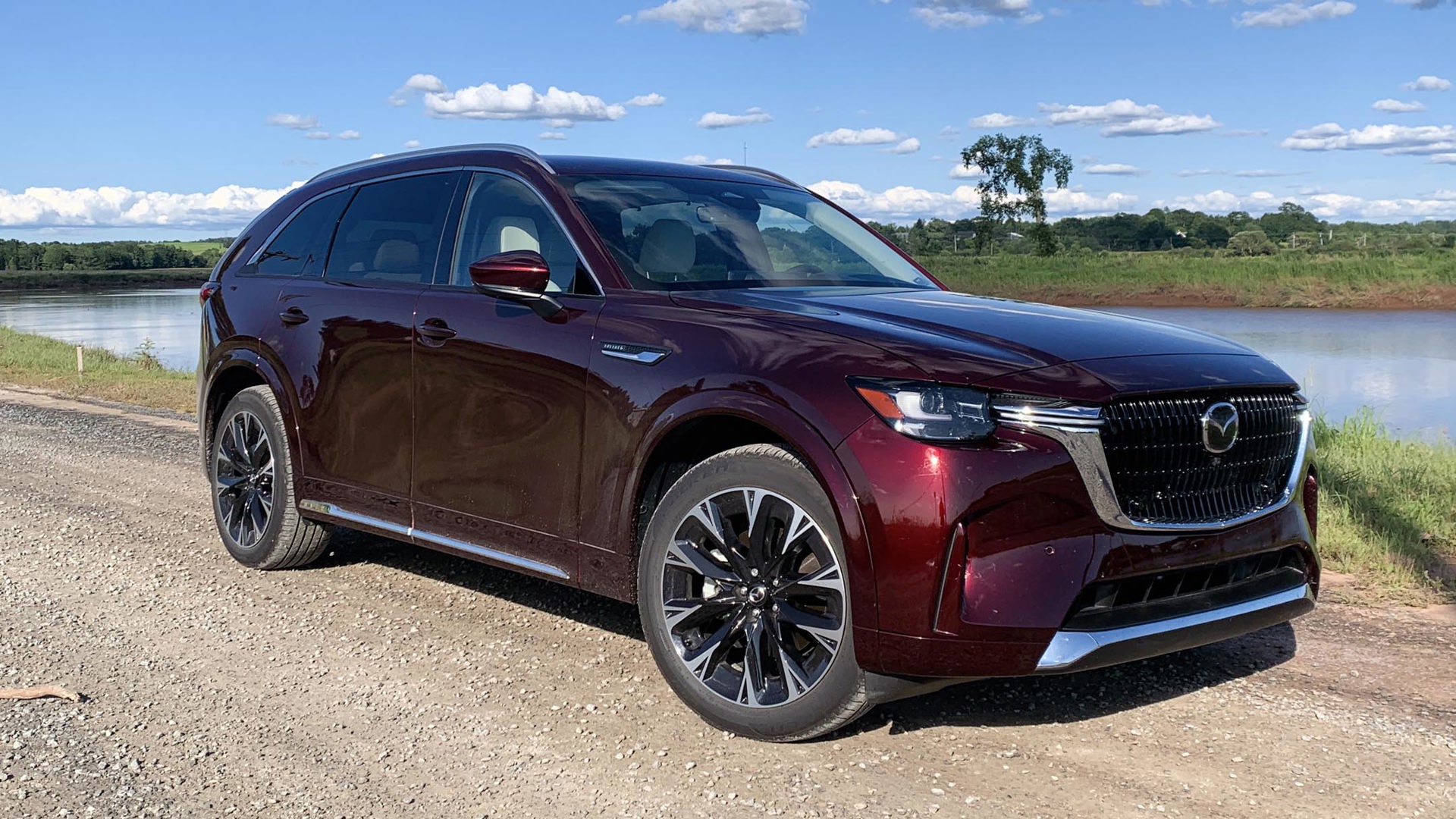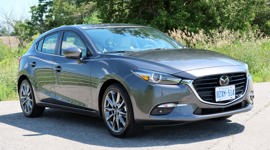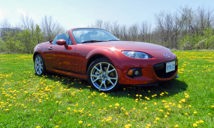Earlier this year, Mazda pulled the cover off the range-topping CX-90, a three-row SUV built to be bigger and better than anything the brand has done before.
Anticipation has been high after poking around a pre-production model, with impressive finishes that were enough to convince yours truly of Mazda’s premium-brand aspirations, and a pair of new powertrains that looked promising on paper. And now that it’s finally here, the 2023 Mazda CX-90 is (mostly) able to live up to expectations.
All-New Powertrains
Cautious optimism was key to Mazda’s announcement of a new inline six-cylinder, particularly when the rest of the mainstream market is using smaller engines in similarly sized sport utilities. But the CX-90 is proof that this brand still has what it takes to build a sultry and smooth straight-six – an engine format usually reserved for luxury brands like BMW and Mercedes-Benz.
Just like those German brands’ engines, this 3.3L is turbocharged and features mild-hybrid electrification. The resulting output tops the CX-90’s key competitors, with the standard version dispensing 280 hp and 332 lb-ft of torque on regular-grade gas, while a high-output version reserved for the top two trims runs on premium and makes 340 hp and 369 lb-ft of torque. Mazda says it’ll safely run on regular as well, but horsepower drops to 319 hp (torque remains unaffected).
With all CX-90s featuring an eight-speed automatic transmission and all-wheel drive, the less powerful version is rated to burn 9.9 L/100 km in the city, 8.4 on the highway, and 9.3 combined; the heartier motor, meanwhile, has ratings of 10.3, 8.5, and 9.5, respectively. Regardless of output and efficiency, the 48-volt mild hybrid system gives the engine a little extra kick while also powering accessories like climate control and the ignition stop-start system.
Shoppers looking for more meaningful electrification should skip straight to the plug-in hybrid (PHEV) version of the CX-90. The PHEV’s 2.5L four-cylinder is also turbocharged, while its 17.8-kWh battery pack juices a 100-KW electric motor. Together they generate 319 hp and the same 369 lb-ft of torque as the high output six-cylinder. Official consumption rates weren’t available at the time of this writing, but its electric-only range estimate of 42 km is on the low end of the market.
Meanwhile, the all-wheel drive system used throughout the lineup is rear-biased, while the eight-speed transmission was developed in-house specifically for these applications. Its very narrow construction is in keeping with the slender inline engines, and minimizing intrusion into the front footwells.
Surprising Drives
Mazda North America’s Powertrain Performance Manager, Jay Chen, noted that the PHEV and gas-only versions are designed to deliver their power quite differently, and after a day of driving the two variants back-to-back that fact became quite evident, but not how you’d expect. When pulling away from a stop and with a moderate stab at the throttle, it’s the PHEV that feels more immediately responsive. It’s been programmed to utilize its significant wallop of electrified torque to augment the smaller engine’s low-end thrust.
Around town – and in hybrid mode – the CX-90 PHEV feels as energetic as any of its turbo four-cylinder contemporaries, and better than some of its V6 competitors. Of course, the ace up its sleeve is its ability to drive around without burning a drop of gas; however, its limited electric range means the federal tax incentive is limited to just $2,500 off the purchase price or a four-year lease.
For decades, driving enthusiasts have praised inline-sixes for their liquid-smooth power delivery and sonorous engine notes – qualities that carry forth here. But the six-cylinder differs from the PHEV in the way its output builds with revs, a trait Mazda feels rewards traditional enthusiasts. When at speed, the mid- and upper-range power is generous, backed by a deep snarl; but when puttering around town and pulling away from a stop, the CX-90’s six-cylinder may underwhelm at least a little. The power and speed are there, but you have to work for it.
The ignition stop-start system exacerbates the off-the-line sluggishness as the engine shuts down as quickly as it can at every stop sign or right-hand turn. Plus, Mazda’s new transmission is eager to be in the highest gear possible in the interest of fuel efficiency (although it does hold lower gears longer when the sport drive mode is selected). The paddle shifters can provide a bit more engagement, but you’ll need to go into the options menu to prevent the CX-90 from switching from manual mode back to full auto after only a few seconds. Either way, shifts are generally quite smooth, but they lack the quickness of the premium competitors Mazda is after here.
When driven spiritedly on the smooth, serpentine roads north of San Francisco, the CX-90 was willing to show off its considerable handling chops. Its balance is impressive, and while there’s no escaping the sheer size and mass of the CX-90, you’ll be extremely hard-pressed to find an eight-passenger SUV that can hustle like this one does.
Mazda the use of inline engines – even the PHEV’s four-cylinder is oriented front to back instead of across the engine bay – help distribute the CX-90’s mass more evenly, while the accompanying narrowness helps give more space for the front wheels. The result is a much tighter turning circle than the existing CX-9 in the Mazda lineup despite this new model’s wheelbase being stretched some 190 mm (7.5 in) in comparison. This means better manoeuvrability, especially at low speeds, and facilitates easier parking.
Comfort, Fit, and Finish
The CX-90 offers more head- and legroom in all three rows than its CX-9 sibling, putting it in direct competition with bigger entries in the segment like the Volkswagen Atlas and Buick Enclave. But then this Mazda’s interior styling and finishes are noticeably more impressive than its mainstream rivals (and maybe even the likes of the Acura MDX and Infiniti QX60). Of note, the top-spec Signature trim is impressively lavish with its available white leather seating, genuine maple wood trim, and beautifully ornate Kumihimo treatment to the dashboard, but even the tan-coloured option driven here is impressive, while a lower PHEV trim finished in black looked and felt well-done.
Nitpicks include top-spec Nappa leather that isn’t as soft and creamy as you’d find in high-end machines, while the seats themselves are quite firm (though they’re supportive). And while the top trims get twin 12.25-inch digital displays – one for instrumentation, the other for infotainment – Mazda is sticking with its confounding console control knob for most functions. Even simple channel-surfing through satellite radio stations requires more button-presses than typing this review. The built-in navigation system was also easily baffled by the tall buildings in downtown San Francisco, but at least there’s wireless Apple CarPlay and Android Auto (plus wireless charging) for those who prefer their own mapping alternatives.
Standard Safety Technology
The CX-90 is loaded up with all the essential advanced safety features one expects these days, including automated emergency braking and sensors to detect pedestrians, plus warnings for drivers who appear to be distracted or those who make the system think they’re going to drive into the path of cross traffic. The 360-degree camera views are always handy when parking, too. There’s also lane-keeping, adaptive cruise control, and blind-spot monitoring standard across the lineup.
Final Thoughts
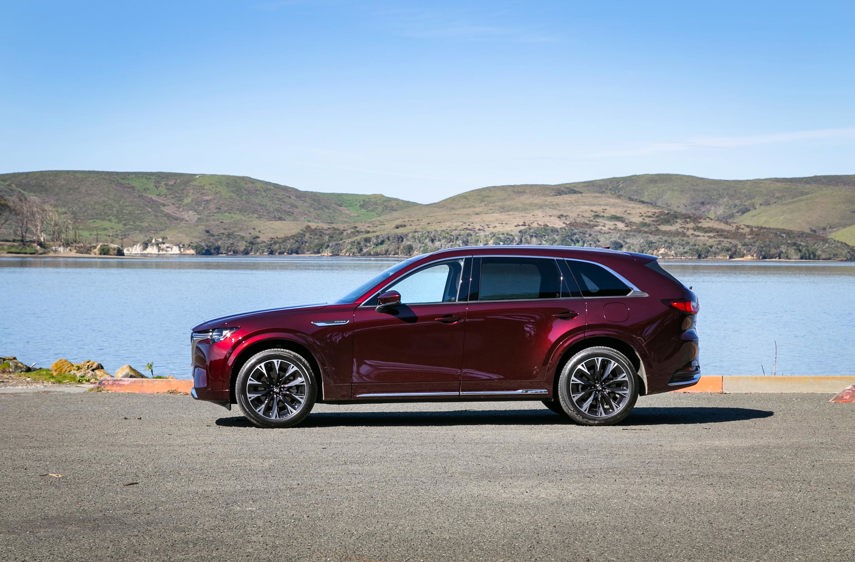
With the CX-90, Mazda has made a definitive push upmarket, putting this model in the unique position of being able to very effectively compete with both mainstream and premium three-row SUVs. It’s also the only proper three-row PHEV for sale on the mainstream market today. (In the premium space, there's the Lincoln Aviator that starts at $85,400 before taxes, fees, and extras, while the Chrysler Pacifica Hybrid is a minivan with a battery and a plug.)
Pricing starts at $45,900 for the gas-only version, with the cheapest PHEV stickered at $54,900 before freight and taxes. Meanwhile, the former ranges up to $63,300, while the latter tops out at $64,350. That puts it in an aggressive position amongst both mainstream and premium entries, with competitive – and compelling – pricing regardless of powertrain.
Based on its tasteful styling, impressive interior materials, and generous cabin space, the 2023 Mazda CX-90 is a solid contender already, while the plug-in powertrain makes it better still. But with the fluid power delivery and smooth, sophisticated harmonics of the inline-six, it provides the sort of intangible luxury qualities that premium buyers expect.
